Toraja, Indonesia: What to Know Before You Go
In Toraja, Life Is Colorful and Compelling… Even After Death
:max_bytes(150000):strip_icc():format(webp)/mike_borobudur-5b6d3ea446e0fb0025fcb683.jpg)
In Toraja , high in the mountains of Indonesia' s Sulawesi Island, the worlds of the living and the dead stand side by side — with hardly anything dividing the two. As a result, the Torajan realm of the dead is just as colorful (if not as lively) as that of the living.
Cave floors littered with human bones and offerings of cigarettes; towering tongkonan (Toraja houses) set high on pillars; effigies called “tau-tau” staring with sightless eyes out of openings in a cliff; and regular sacrifices of buffaloes to appease the spirits of the newly departed — these all spring from the belief that the departed ancestors of Toraja have not really “departed” at all.
Spend a few days in Toraja to take in the fresh mountain air and the hospitality of the locals — and you'll find how happily they live, even in the ever-present gaze of their sainted ancestors. The unique culture of Toraja is well-worth the ten-hour curvy mountain drive it takes to get there!

Where Is Toraja, Indonesia?
Long ago, Toraja was effectively insulated from mainstream Indonesia by the mountains of South Sulawesi. Getting to Toraja took several days of hard marching up mountainous terrain to reach a town some 200 miles north of the capital Makassar .
Today, a concrete highway makes short work of that distance, requiring only about eight to ten hours' ride by bus. (The Torajans have a reputation as excellent mechanics; they own and operate most of the buses connecting Makassar to their homeland.)
Makassar, in turn, is only a short nonstop flight from Jakarta and Bali, helping make Toraja into a key point in any substantial Indonesia travel itinerary .
Travelers disembark at Rantepao , North Toraja's capital and its cultural center. Rantepao's low-slung urbanity, chock-a-block with low 1960s-era buildings and the occasional tongkonan -style structures, quickly gives way to rice fields and towering limestone peaks.
The cooler weather is your only immediate clue to Toraja's elevation. You'll need to visit lookout points like Lolai to get a visceral idea of your place in the highlands: in the mornings, the lookout point at Lolai feels like an island peeking out of a sea of clouds.
What Sets Toraja Culture Apart From the Rest of Indonesia?
As the lowland Bugis and Makassar people underwent conversion to Islam, the Toraja managed to hang on to their traditional beliefs — Aluk Todolo , or “the way of the ancestors” — that still serve as the basis for Toraja's culture today.
Even after the mass conversion of most Torajans to Christianity, adherence to old Aluk Todolo habits die hard.
The traditional villages in Toraja — such as Pallawa — preserve the locals' original lifestyle, embodied in the area's iconic curved-roof tongkonan houses. Each community houses a single family or clan, who live in the row of houses facing north; smaller rice granaries ( alang ) line the other side of the lane.
Torajan Status Symbols
Many traditional tongkonan feature a column of water buffalo horns, arranged according to size. These horns are markers of status: the remnants of previous sacrifices in honor of some dearly departed ancestor.
The people of Toraja — like every society in the world — busy themselves with collecting status symbols, accumulating and spending wealth, and breeding descendants.
Torajans use rites of passage to cement their status, wealth and family standing in society; nowhere is this more apparent than in Toraja's famous funerary rites.
A Toraja Funeral: Going Out with a Bang
The strict Aluk Todolo system dictates how Toraja people live, depending on their position on certain social and spiritual ladders.
- Social : a four-tiered class system with royalty at the very top, and servants at the very bottom.
- Spiritual : three different levels, from our mortal life to puya , the afterlife, to heaven for noble spirits and gods ( deata ).
When death comes for a Torajan, the family lays the corpse in the master bedroom and treats it like a patient. “Mother is sick,” a Torajan might say of their parent, her corpse lying in state in the next room, being served food once a day by his obedient children. (Torajans use a traditional embalming fluid using the juices of betel-leaf and bananas to ward off decay.)
As the body slowly mummifies in the tongkonan , the family pulls out all the stops to arrange the biggest party money can buy: a funeral usually held over a month after the time of death.
Torajans believe that souls cannot enter puya (the afterlife) unless they perform a proper makaru'dusan ritual — involving the sacrifice of as many pigs and water buffaloes as they can afford.
The Water Buffalo: An Unlikely Status Symbol
Water buffaloes do no work in Toraja, despite the area's endless rice terraces. So why is there a large, lowing herd trading at high prices at Rantepao's Pasar Bolu market ?
Every rite of passage calls for the sacrifice of several buffaloes or pigs — but the rules are particularly stringent for funerals. Aluk Todolo sets out a minimum number for slaughter, depending on your status. Middle-class families must offer at least eight buffalo and 50 pigs; noble families must slaughter upward of a hundred buffalo.
Families spend about 500 million Indonesian rupiah (USD $37,000) per water buffalo, with the price reaching astronomical heights for certain colors or patterns.
Tedong saleko , or white buffaloes with black spots, can fetch up to 800 million rupiah (USD $60,000) while the most expensive buffalo of all — albino buffalo called tedong bonga — can cost over one billion rupiah (US$75,000)!
No part of the buffalo goes to waste — in a conspicuous show of generosity, the family donates the meat to community members who attend the funeral.
The Nobility's Final Rest in Tampang Allo
For the status-conscious Toraja people, not even death can erase class distinctions.
A cemetery cave — Tampang Allo , on the southern outskirts of Rantepao — contains the remains of the former ruling family of Sangalla district, Puang Menturino, who lived in the 16th century. The boat-shaped coffin ( erong ) immediately tells us that the decedents here are part of the nobility, for this type of coffin was the preserve of rulers and their kin.
Time has not been kind to the remains of Puang Menturino — the intricately carved erong , mounted on beams set high above the cave floor, have deteriorated through the centuries, and some have dropped their contents below.
Locals have cleaned the scene up somewhat, arranging the ancient skulls and assorted bones on ledges around the cave. Offerings of cigarettes (left by pious locals) still litter the rock around the skulls.
Last Resting Place for All Classes in Lemo
Burial caves are in short supply these days, but limestone cliff faces are a dime a dozen around Toraja. Local custom disdains burial in the ground; Torajans prefer to be entombed in rock, which these days means a hole carved out of a Toraja cliff.
In the town of Lemo , a sheer cliff stands honeycombed with hand-carved crypts called liang patane , their doors measuring about five feet square and opening into a small space that fits four or five coffin-less remains. L iang patane are meant to accommodate entire families, and are guarded by tau-tau, or effigies, that depict the persons entombed behind them.
Unlike caves, liang patane are permitted to most Torajans regardless of class, but the cost of such burials all but reserves them for the well-heeled. Each hole costs about 20 to 60 million Indonesian rupiah to carve (about USD $1,500-4,500), not counting the cost of the funeral ritual.
Tau-tau: Toraja's Silent Guardians
A few steps down from the Lemo cliff, you'll find a shop for a tau-tau maker, whose handiwork stares out from the shop floor.
Tau-tau are intended to be likenesses of the dearly departed, and their makers take care to reproduce unique facial traits in the finished product. Craftsmen use different materials depending on the social class of the deceased: nobility get tau-tau carved from jackfruit wood, while the lower classes must content themselves with effigies made out of bamboo.
The tau-tau wear real clothes, which are replaced every few decades by surviving family members. The Lemo tau-tau wear relatively new threads, as they ditched the old ones before the President of Indonesia came to visit in 2013. (The tau-tau themselves are estimated to be over 400 years old.)
Tau-tau makers are traditionally paid in water buffalo, and these effigies don't come cheap: about 24 water buffaloes is the average price, with higher-end tau-tau going for 40 or more water buffaloes.
Practicing the Old Ways Alongside a Newer Faith
For all these picturesque pre-Christian traditions, most Torajans profess Christianity; locals practice Aluk Todolo alongside the sacraments, and see little conflict between the two.
60 percent of all Torajans belong to a Protestant Church, 18 percent profess the Catholic faith, and the remainder is split between Muslims and hardcore Aluk Todolo practitioners.
You'll find a Christian church ( gereja in the local lingo) on almost every road bend, and both capitals of Toraja — Makale and Rantepao — feature a massive Christian structure erected on a nearby hill, visible from anywhere in the city.
A giant cross stands on Bukit Singki overlooking Rantepao, the most visible sign of the local faith. And on Buntu Burake hill over Makale, a giant Jesus statue stands even taller than Rio de Janeiro's Christ the Redeemer (40 meters in height, versus the Redeemer's 38 meters).
Visitors to Buntu Burake get an eyeful of the gorgeous Toraja landscape, as a concrete Jesus — arms outstretched, blessing the city below — watches over their shoulder.
The sculptor, an artisan from Yogyakarta named Hardo Wardoyo Suwarto, is Muslim himself – a situation that reverses that of another Indonesia landmark, the Istiqlal Mosque in the Indonesian capital Jakarta , a massive Islamic structure that was designed by a Christian!
Torajan Coffee
Toraja's highland climate makes it an ideal environment for Arabica coffee cultivation.
Thanks to its isolation in the 19th century, Toraja's coffee plantations were spared from the coffee-leaf rust epidemic that swept Indonesia in the 1870s; as a result, Torajan coffee was so prized, a “Coffee War” broke out in the 1890s to seize control of the local coffee industry.
Today, combat is the last thing on visiting coffee lovers' agenda. You can buy a cup of hot joe in every coffee shop, restaurant and warung (street stall) in Toraja. For beans and ground, budget shoppers can head over to Malanggo' Market to buy inexpensive Robusta by the liter (about 10,000 Indonesian rupiah per liter, or USD $0.75).
Shoppers with a bigger budget and more discriminating tastes can head over to Coffee Kaa Roastery , a specialty dispensary with Arabica beans and ground labeled according to type and origin. Beans at Kaa cost about 20,000 Indonesian rupiah per kilogram, or about US$1.50.
Where to Stay in Toraja & Where to Go
Indonesia's tourism board touts Toraja as the next cultural destination after Bali , and their optimism is well-founded: beyond the cultural sites mentioned above, Toraja offers a few other adventures and activities well-suited to the hilly terrain:
- Trekking and Cycling: Visit the villages around Rantepao and Makale on foot or by bike — the scenic highs and lows of Toraja's highlands consist mainly of rice fields and forest, interrupted occasionally by limestone peaks and distinctive tongkonan villages. (Read about Southeast Asia's other top trekking trails .)
- Whitewater Rafting: If Toraja feels a little too laid-back, then go rafting on Toraja's rivers for that adrenaline rush: operators launch regular whitewater raft expeditions down Sa'dan, Mai'ting and Rongkong rivers, with levels of difficulty ranging from class I all the way to class V.
- Culinary Adventure: The rice-growing Torajans make their mark on traditional Indonesian cuisine with unique dishes like pa'piong , or spiced and seasoned meat grilled inside a bamboo tube. Eaten with rice — and preferably eaten by hand — pa'piong is the perfect introduction to Torajan cuisine, found at many restaurants all around Makale and Rantepao.
Accommodations in Toraja cater to travelers of all budgets. The Toraja Heritage Hotel is one of the area's very first four-star hotels and still one of the largest in the area. Giant tongkonan -style buildings surround the swimming pool – providing a taste of Toraja culture even before you've set out to explore the area!
Indonesia Holidays & Festivals
9 Best Things to Do at Lake Toba, Indonesia
The Top 7 Things to Do in West Sumatra
Indonesia's Blue Fire Volcano, Kawah Ijen
The Top 15 Things to Do in Indonesia
15 Top Things to Do in Makassar, Indonesia
The Top 7 Attractions on Nusa Lembongan
The Top 8 Things to Do in South Sumatra, Indonesia
Indonesia's Buddhist Monument Borobudur
Pura Luhur Uluwatu's Kecak and Fire Dance
The Complete Guide to the National Parks in Sumatra
8 Days in Indonesia: A Travel Itinerary From Jakarta to Bali
3 Weeks in Indonesia: A Fully Loaded Itinerary
Culture Clash: Sasak Sade Traditional Village in Lombok, Indonesia
The 9 Best Places to Hike in Sumatra
Gili Islands of Indonesia: Planning Your Trip
Tana Toraja Indonesia: Travel Guide & Best Things To Do
The remote land of Tana Toraja, Indonesia (on Sulawesi island) is known for having one of the most bizarre and unique cultures in the world.
We spent several days there in 2020, and even managed to visit a traditional Tana Toraja funeral with the invitation of some friendly locals.
Tanah Toraja is a fascinating journey, with its unique cliffside graves, karst mountains, and notoriously unusual funeral customs and beliefs.
This travel guide will explain how to get to Tana Toraja, where to stay, all the best things to do, and everything else you need to know before you go!
Table of Contents show 1) Tana Toraja Culture In A Nutshell 2) Where Is Tana Toraja? 3) How To Get To Tana Toraja 4) How To Get Around Toraja 5) Best Things To Do In Toraja Indonesia 6) Toraja Entrance Fees 7) Where To Stay In Tana Toraja 8) Other Toraja Tips 9) Best Time To Visit Toraja Indonesia 10) How Long To Stay

Bori giant grave stone
Tana Toraja Culture In A Nutshell
The local religion in Toraja is called Aluk To Dolo (‘Way of the Ancestors’). It’s based on animist myths and traditions, infused with some elements of Protestant Christianity brought to Sulawesi by the Dutch in the 1920s.
Toraja culture is focused on death and the afterlife, and you can see this in the famously elaborate funeral ceremonies where they have days of feasting, dancing, and the slaughter of buffalos and pigs. The funeral is central to Toraja culture.
We enjoyed seeing the artistic tongkonan houses with their iconic curved rooftops, and exploring the hundreds of peculiar grave sites carved into the cliffs, caves, and boulders.
Toraja people are very friendly and welcoming to foreigners!

Toraja traditional dress

Water buffaloes are sacrificed in the funeral ceremonies

Toraja culture focuses heavily on death and the afterlife
Where Is Tana Toraja?
The Tana Toraja regency is located in the highlands of south Sulawesi island in Indonesia.
The main town of Rantepao sits in a scenic mountain area surrounded by limestone karsts, rivers, and rice terraces, so it’s a great place to explore.

Tana Toraja, Indonesia is surrounded by limestone karsts
How To Get To Tana Toraja
Tana Toraja, Indonesia can be reached by air, bus, or private car.
You can find more info on each option below. Flying to Toraja is the easiest, but bus is the cheapest. Driving there in a car may be best for groups.
All flights to Toraja have to transit first in Makassar (UPG), and then you can fly directly to the new Tana Toraja airport (TRT) which was just completed in 2020. The flight from Makassar to Toraja takes 1 hour and costs about 1 million Rupiah ($70 USD) for a one way ticket.
You can shop for flights to Makassar and Tana Toraja at Skyscanner. Lion Air operates this flight daily, and I would guess other airlines may start doing the route soon too since it was just opened recently.
Once you reach the airport, it’s a 1 hour drive into town, and a taxi will cost about 250k Rupiah. We asked our hotel to combine our airport pickup with a half day tour of Toraja, so we paid 400k total. This worked out great because we got to see some things on our first day there.
Personally, I think flying is the best way to get to Toraja Indonesia nowadays, but going by bus or car can have its own advantages as well. I’ve described these options below.

The new Tana Toraja airport with its Tongkonan rooftop
There’s a daily morning or night bus to Tana Toraja from the bus terminal in Makassar.
The bus ride from Makassar to Rantepao takes about 9 or 10 hours and there are several stops along the way. The bus departure times from both Makassar and Toraja are 9 AM for the morning bus, or 9 PM for the night bus.
This is a very long journey, but it could make sense for solo travelers on a strict budget. It costs around 200k Rupiah per person (one way).
A car + driver can be hired to take you from Makassar to Tanah Toraja for about 750k to 1 million Rupiah ($50-70). This is the most cost effective option if you’re traveling in a group with several people. The drive takes 8+ hours and the road is in good condition.
Alternatively, you can rent a car to self drive from Makassar for about 600k Rupiah, but I wouldn’t recommend this unless you’re already experienced with driving in Indonesia.

Rice fields near Rantepao
How To Get Around Toraja
Once you arrive in Tanah Toraja, the best way to explore the area is to hire a car + driver or rent a scooter.
It’s very cheap to hire a driver in Toraja. Our hotel owner was happy to show us around to all of the tourist sites for 400k Rupiah per day.

Mountains near Makale
Best Things To Do In Toraja Indonesia
The cliff side graves at Lemo are one of Tanah Toraja’s most famous sights.
The first thing you’re greeted by is a row of creepy Tau-Tau statues staring down at you, as if they’re guarding the graves.
Lemo is very accessible. Our hotel owner took us there while driving us from the airport to our homestay in Rantepao.

Lemo cemetery

Creepy Tau-Tau statues at Lemo
Londa is a burial ground with two deep limestone caves filled with coffins and bones.
If you follow the caves far enough back, they connect with each other by a series of tunnels. A flashlight will be handy, otherwise you can rent a lantern at the entrance.
Londa is easy to combine with Lemo and other sights in south Tanah Toraja.

Coffins at Londa

Spooky burial cave at Londa
3. Kete Kesu
This is a popular collection of Toraja traditional houses (tongkonan) with a cave cemetery in the background.
Personally, I didn’t think the houses at Kete Kesu were as nice as the ones at Palawa (more on that later).

Tongkonan houses at Kete Kesu

Coffins at Kete Kesu
4. Yesus Buntu Burake
Torajan religion was mixed with Christianity after the colonials arrived, and it’s reflected in a giant Jesus Christ statue that stands on the hill above Makale.
It’s the second tallest Jesus statue in the world (after the famous one in Sao Paolo, Brazil), and you can drive all the way up to it from Makale. No hiking needed.

The Jesus Christ Blessing statue near Makale

Drone view of Yesus Buntu Burake
5. Buntu Pune
This is a small group of graves and Torajan traditional houses (tongkonan) that seem to be mostly overlooked by tourists.
Buntu Pune is located right in Rantepao , so you can reach it easily without a tour. We walked from our hotel in 5 minutes.

Traditional houses at Buntu Pune

Tongkonan close up
6. Bori Kalimbuang
Bori is a grave site in north Toraja with megalithic stones that were stood upright and used as headstones. It’s also known for having ‘baby trees’ where babies were buried if they died in infancy.
If you keep following the path, there’s a peculiar looking giant grave stone with more than a dozen tombs in it. I thought it was one of the most fascinating sights in Toraja.

Bori grave stones
7. Mount Sesean
Mount Sesean is one of the high points near Rantepao, and it has some of the best natural scenery in the area, with rice terraces for miles.
Hiking to the top from Batutumonga takes about 2 hours one way. The trailhead is pretty easy to find, and when you reach the top you get 360 degree views of the Toraja valley.
The peak of Gunung Sesean is 2,100 meters (6,900 feet) in altitude, and it’s one of Toraja’s most popular sunrise spots!

Peak of Mount Sesean

Rice terraces at Mount Sesean
8. Loko Mata
Loko Mata is a giant burial stone on the main road near Batutumonga and Mount Sesean.
This is probably the biggest boulder we saw in Toraja, and it has dozens of tombs carved into the rock on all sides.
It’s a very interesting spot, but I thought the grave stone at Bori was better.

Loko Mata grave stone

9. Palawa Houses
Palawa has some of the best traditional houses we saw in Tana Toraja.
These tongkonan are well preserved and super photogenic, with rows of water buffalo horns and skulls decorating the front.
It’s a very underrated spot that somehow doesn’t have as many tourists as we saw at places like Kete Kesu.

Tongkonan houses at Palawa

Giant buffalo horns
10. Limbong Lake
This is a lake near Rantepao with limestone karst mountains and water that changes color in the seasons. If you come here in the rainy season, the locals said the water turns a nice blue color.
Even if you visit during the dry season, when the lake is greenish brown, the karsts around the lake make for some pretty spectacular photos.

Limbong Lake (aka Danau Limbong)
11. Tana Toraja Funeral
One of the most important events in Tana Toraja, Indonesia is the traditional funeral ceremony. These are extravagant, usually last several days, and involve the gory slaughtering of pigs and buffaloes as a gift/honor to the family of the deceased.
Toraja culture revolves around funerals, and it’s a big draw for international tourists too. Foreigners are very welcome to attend, but as a guest you’ll be expected to buy a small gift for the family (usually a few packs of cigarettes).
If you want to witness a Tana Toraja funeral, the best thing to do is check with your hotel and/or tour guide about when and where the next one will happen. Funeral season is generally July to September.

Toraja buffalo sacrifice

Cutting up the buffalo carcass to harvest
12. Ma’Nene Ceremony
Toraja’s most shocking and infamous tradition by far is the Ma’Nene ceremony that happens every year after the harvest season.
This is when the relatives’ corpses (dead bodies) are brought out of their graves like zombies , cleaned, and dressed in fresh clothes.
The locals don’t find this disgusting. In their culture, it’s loving and respectful, and they want to stay connected with their lost relatives. Keep in mind it’s an ancient tradition.
Toraja Entrance Fees
Most tourist sites in Tanah Toraja have entrance fees, which for foreigners tend to be about 30k Rupiah ($2) per person. You pay this at each tourist site.

Rows of tongkonan houses
Where To Stay In Tana Toraja
Most Toraja visitors stay in Rantepao, which is the main town area.
Accommodation is pretty basic, consisting of homestays and small hotels, but the quality and value is surprisingly good.
Here are some of our top picks:
- Rosalina Homestay – Free breakfast/WiFi and the owner was very helpful arranging our airport pickup & Tanah Toraja tours
- Manubackpacker – Outstanding value for a twin room with private bathroom
- Toraja Lodge Hotel – Superior king room with WiFi & breakfast included
- Tongkonan Layuk Lion – Free dinner and breakfast with a village atmosphere and traditional Tongkonan houses
- Toraja Misiliana Hotel – One of the nicest hotels in Toraja, with beautiful grounds, free continental breakfast, and an outdoor pool
These prices may fluctuate from time to time, so just keep an eye out for a good deal.

Stone buffalo face guarding a grave stone in Tanah Toraja

Mountains above Makale
Other Toraja Tips
- Credit Cards: Everything in Tanah Toraja is cash only. That includes hotels, restaurants, and entrance fees for tourist sites. So keep cash handy.
- ATM: There are plenty of ATMs in Rantepao with standard withdrawal limits. Foreign cards work fine.
- WiFi: Hotels in Rantepao generally have decent WiFi, and it’s quickly improving.
- Cell Service: Our SIM cards from Telkomsel had great reception in the Rantepao area.
- Restaurants: The streetside warungs in Rantepao didn’t seem great, but you can find good food if you look around. Two of our picks would be Raja Babi Waroenk and Monika Cafe & Resto .
- Safety: I’ve traveled all over Sulawesi, both as a solo traveler and also later with my wife. Toraja is very safe, and the locals are quite welcoming to tourists. Just take normal precautions.
- Mosquitoes: I’ve never heard of a tourist getting Malaria from mosquitoes in Tana Toraja. According to this Tribun News article from 2020, there haven’t been any local cases of Malaria in over two years. However, it’s still a good idea to wear repellant while out and about, just in case. Malaria can be nasty and dangerous.
- Apps: The Grab and GoJek ride-hailing apps aren’t available in Rantepao, but taxis and food delivery aren’t too hard to sort out if you need them.

Souvenir tongkonan houses
Best Time To Visit Toraja Indonesia
Tanah Toraja’s climate is quite a bit cooler than the rest of Sulawesi, with average temps around 23 Celcius (73 F) all year.
If you want to see the Toraja funerals and Ma’Nene ceremonies, the best time to visit is from July to September (and especially the month of August).
Otherwise, any month is fine for visiting Toraja, although it’s more rainy from November to May.

Baby grave where infants were buried in trees

Inside a tomb at Bori
How Long To Stay
You can see the highlights of Tana Toraja, Indonesia in 3 days.
With that said, Toraja is a big area so you could easily stay longer exploring all of the mountains and waterfalls if you wanted.
Happy travels!

- Most Beautiful Indonesian Islands - Best Places To Visit In Indonesia
- Best Hikes In Indonesia - Volcanoes, Jungles, & Waterfalls
- Indonesia Waterfall Guide - Best Waterfalls In Indonesia
- Indonesia Beach Guide - Best Beaches In Indonesia
- Best Things To Do In Indonesia - What To Do In The Islands
- Indonesia Travel Guide - Tips, Info, & Photos

You may also like
Fulidhoo island guide: shark & stingray beach in maldives, how to visit dhigurah island: budget paradise in maldives, how to visit tanjung puting national park in indonesia, sanur bali travel guide: 24 best things to do, coron vs el nido: which is better all differences explained, banggai islands travel guide & itinerary for sulawesi, leave a comment cancel reply.
Save my name, email, and website in this browser for the next time I comment.
Tana Toraja
The Land with Spectacular Nature and Uniquely Culture
Tana Toraja is safely protected beyond the lofty mountains and rugged granite cliffs of the central highlands of the island of Sulawesi and the home of the Toraja people. 'Discovered' and opened to the world from their long isolation only since the beginning of the last century, the Toraja today still adhere to their age-old beliefs, rituals and traditions, although many of her people are modernized or have embraced Christianity.
The nobility of Toraja are believed to be descendents of heavenly beings who came down by a heavenly stairway to live here on earth in this beautiful landscape. To keep up the energy of the land and its people, the Toraja people believe that these must be sustained through rituals that celebrate both life and death, which are attached to the agricultural seasons. Tourists to Toraja, therefore, are either attracted by its unique culture and rituals, most of which are mostly centered around graves and death ceremonies. While others prefer to avoid the morbid images and go trekking through the spectacular, almost untouched Toraja countryside visiting remote villages, or exhilarate in rafting the Sa'dan river rapids.
A Bemo, the local transport, is the best way to get to know the locals, besides chartering vehicles (minibuses or Jeeps) with or without driver. Enjoy walking around villages.
To get to Tana Toraja one must fly to Sultan Hasanuddin airport in Makassar , capital of the province of South Sulawesi. As a hub for East Indonesia there are many airlines flying to and from Makassar. The only way to Toraja from Makassar airport is overland. There are no flights between Makassar and Toraja.
There are also buses to Rantepao that leave Makassar daily. The journey takes around 8 hours and includes a meal stop. Tickets must be bought in town but coaches actually leave from DAYA bus terminal, 20 minutes out of town by bemo. Several companies in Rantepao run buses back to Makassar. The number of buses each day depends on the number of passengers. It is best and easiest to contact an experienced travel agent to arrange and take care of your full itinerary to the Toraja highlands.
Tana Toraja in Moving Frames
An exploration of the wondrous labuan bajo, borobudur - the grand temple, mandalika - where the waves collide, likupang - escape to the new world, the heartbeat of toba, nearby spectacles.
Ke'te Kesu': Ancient Village in Toraja Highlands
Londa Cave Cemetery: Explore Toraja's Past
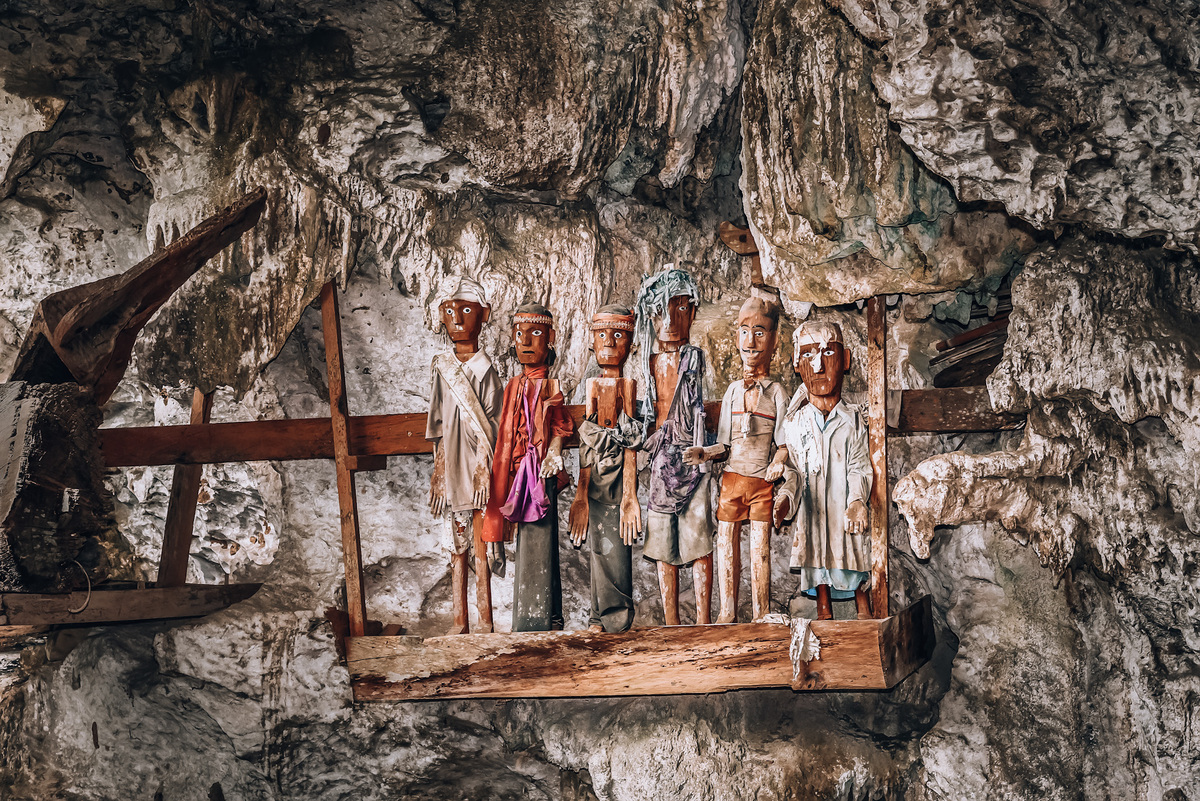
Tana Toraja's Tau-Tau: Guardians of the Deceased
Bolu and Makale Markets

Sa'dan River
What they say, romantic bandung - the paris of java.
Well, I just love Bali so much, and we fell in love with the culture, people, the food. Everything was just amazing. I feel like in Bali, you can find serenity anywhere, literally. It's our favorite place that we've been to on our entire trip.

by Jack Morris Influencer
Tana toraja trip ideas.
Indonesia's 5 Challenging Staircases to Breathtaking Heights

9 Must-Do Things: Tana Toraja's Cultural Wonders

Wonderful Indonesia through The Magic of Inspiring Illustrators
#TanaToraja

Wonderful.Indonesia
See the Destination

Visit our other website
This is the official website of the Ministry of Tourism, Republic of Indonesia. The contents listed on this website are intended for informational purposes rather than commercial. Any displayed sale is meant as a token of partnership and will always redirect you to our partners' sites.

©Hartono Wijaya/500px
Tana Toraja
Home to some Sulawesi's most stunning landscapes and one of Indonesia's most compelling traditional cultures, it's no wonder Tana Toraja is high on many bucket lists. The visual allure is immediate, with villages clustered around elaborately carved and painted houses with boat-shaped roofs, and towering terraces of emerald green rice paddies, all of which is overseen by a protective necklace of jagged jungle-clad hills.
Attractions
Must-see attractions.

Ke'te Kesu'
The four stately tongkonan and many granaries that make up Ke'te Kesu' were moved to this picturesque site in 1927 when the savvy family head noticed the…

Tampang Allo
Whether it's the tau tau, the cave itself, or the peaceful rice paddy setting squeezed between a maze of cliffs, this is one our favourite sites in Tana…

Live out your Indiana Jones fantasies at this extensive (and very popular) burial cave below a massive cliff face. Its entrance is guarded by a balcony of…

A veritable village of tau tau stare down with unblinking eyes and outstretched arms from this impressive burial cliff riddled with tombs. The sheer rock…

Heralded as the world's largest water buffalo market, this dusty, chaotic scene pops off every Tuesday and Saturday when stately beasts imported from…

Bori' Kalimbuang
There are lots of places to see standing stones, but this is one of the nicer ones. With 102 stones – each representing a different funeral conducted at…

Whether its claim to be the oldest known baby grave in Toraja is accurate or not, this site is definitely one of the more compelling. The minimal…

Kambira Baby Graves
Torajans traditionally inter deceased babies, who have not yet teethed, in trees, believing that these infants are more pure than adults, and that their…
14 Amazing Things To Do In Tana Toraja

It was the Indonesian Tourism Board who took me away from the islands around Bali and showed me more of what Indonesia has to offer. I felt like I was exploring a different country as the Trip of Wonders made me explore parts of North Sumatra, Central Java and a region in Central Sulawesi: Tana Toraja.
The walking dead of Toraja
In my weekly blog The Walking Dead of Toraja I already explained a little why this region is so extravagant to visit. It may sound a little creepy, but the believes of the Toraja people are just a little different than ours and therefore extremely interesting to experience.
Toraja people live for the afterlife and death is welcomed as a celebration. They live a simple life and departing is not seen as something sad. In fact it is a huge ceremony where buffalos are sacrificed and the meat shared among other villagers. Torajans live in so called castes systems, which defines your social status through their ancestors. The higher your social rank the bigger your Toraja funeral ceremony will be. Life of the Torajans is about death!

So why do people talk about the walking dead of Toraja?
When someone dies they are not buried straight away but it can take up to several years before someone will be put in a coffin and brought to their final resting place. As the family wants to give the departed a great funeral they have to save up enough money to pay for all the rituals. In the meantime they keep the corpse at home and bring offers to it every day. They keep the corpse of their deceased beloved ones in a good state by balming them from time to time, some even dress them up, wash them and take them for a walk around the village. This may sound creepy in our believes, but this is Toraja culture and I think it should be respected as it is extremely fascinating. Now you know why people talk about the walking dead of Toraja if you still can't believe it, check out this little video. This video contains dead people! ;)

Some say if you have not witnessed a Toraja funeral ceremony you have not experienced the real Toraja culture. Of course this is one of the best things to do in Toraja as this place is mainly about the extraordinary rituals of the Toraja people, but there are more things to do in Toraja. But first let me tell you all about their cultural highlights.
1. Toraja funeral ceremony
Clearly this is among the best things to do in Toraja and many tourists from around the world are willing to experience this extraordinary aspect of Toraja culture. For more information about the Tana Toraja funeral ceremonies and how to experience them contact have a look at the Indonesia Tourism Board website .

2. Tour around burial sites
In my weekly blog about my Tana Toraja tour I explained that Toraja people are not buried under the ground but as close to heaven as possible depending on your social class. Therefore one of the great things to do in Toraja is the visit their burial sites.

3. Bori’ megalithic burial site
If you take a Tana Toraja Tour for sure you will be brought to this place where huge megalith stones eract from the ground symbolizing the land and its entirety. They all look like massive gravestones, but it is only symbolic. Coffins are placed in the caves around the burial site.

4. Lemo Burial Caves
In Lemo coffins are perfectly places in crevices of giant boulders and is believed to be one of the oldest burial cliffs in Toraja.

5. Londa Toraja - Most Famous Burial Site
This burial cave is probably the most famous tourist spot and among the best things to do in Toraja. Keep in mind that things get real here. You will see numerous coffins, human bones, skulls and even open coffins. You are able to enter a cave where thousands of people have found their last resting place. It was my first time that a saw human bones and not just one, but piles!

6. Tampang Allo - Bone Crusher
Another cave similar like Londa though a bit more organized with bones and skulls from departed neatly arranged. Get one of the guides hanging out in front of the entrance to get permission to go inside. Bargain is a must!

7. Kambira - Burial Site For Babies
This is not a place for the faint-hearted as Kambira is the burial site for babies. When a baby died before it grew teeth it was giving back to Mother Nature and therefore places in the tree without a cover. Over time nature would take care of the baby corpse and take it back. Talking about some interesting things to do in Toraja this certainly cant be missed!
8. Lo’Ko’Mata - Rock Burial Site
This is another incredible stone burial site, but different than the others. It is a massive rock formation in where many burial chambers are carved out and can hold up to a couple coffins. The higher the burial chamber is located in the rock formation the more important that person was.

Now that you know all about their burial sites you must wonder is there are more things to do in Toraja besides touring from one graveyard to antoher. But yes there is definitely more to explore of the Toraja culture.
9. Ke’te Ke’su - UNESCO Village
When on a Tana Toraja tour you cant miss the Unesco Word Heritage site of Ke’te Ke’su. This tradional village is one of the most complete settlements in the region and therefore popular with tourists to visit. Try to see if you can fix a traditional dance performance. This is the place where a lot of Toraja funeral ceremonies are held.

10. Stay in a local home
May be not among the standard things to do in Toraja is to stay with a local family and experience the Toraja culture first hand. As this region is far from developed staying with a local family is an incredible experience, but keep in mind that it can be really basic. Some houses lack electricity and families live super simple. Although they hardly have anything they love to share whatever they have and don’t ask anything in return apart from respecting their culture.

As the Toraja culture is so rich most people have no time to do something adventurous, but as we are in the misty highlands aka jungle up here, there are some adventurous things to do in Toraja as well.

11. White water rafting
Only very few people know about white water rafting in Toraja, but where there are lush green misty mountains there are also endless waterfalls and fast rapids. Chasing waterfalls in Toraja is a great adventure itself but if you are looking for a bigger adventure try to arrange white water rafting in town.
12. Shopping - local souvenirs
Being an isolated and self-sufficient etnic group for many decades the Torajans created their own style and endemic art. You will find many handwoven clothes and if you visit local villages they will be proud to show you how they make it. The same counts for the many carvings you will find on your way. Some wooden sculptures are incredibly detailed displaying the Toraja culture. Prices vary incredibly bargaining is strongly advised.

13. Hiking in Toraja Land
As Toraja Land is located in the hilly countryside this is definitely a must do. Best is to arrange a guide to guide you over the lush green hilltops, find traditional mountain villages for you and who guides you through coffee plantations. This is the jungle prepare to get wet so bring a rain jacket, but if the rays of sun pierce through the lush vegetation this place is a hiking madness and one of those things to do in Toraja that not many people experience.

14. Try the famous Toraja Coffee
Because of its geographic locations close to the ocean but still high up in the misty highlands this region became famous for its distinctive coffee flavors. The exceptional taste of Toraja coffee was discovered by the Dutch and in the time the coffee trade was highly valued Toraja became a coffee mecca. Find yourself a spot with a great view over the highlands and sip a Toraja Coffee.

Getting to Tana Toraja
A Tana Toraja travel guide would not be complete with some advice on how to get there. You can reach the central highlands of Toraja by car, bus and plane easily, but it still is a little adventure.
Getting from Makassar to Toraja by car
If you decide to rent a car in Makassar and drive up North to Toraja you will be blessed with an incredibly scenic ride, but keep in mind that this trip will take around 6 - 8 hours. On your way up North you will pass the lofty karst mountains of Maros, which are supposed to be the second largest in the world after the ones in China. Other stops along the way from Makassar to Toraja are: Pare a traditional harbour town and Enrekang a mountain village with exquisite views of Gunung Nona.
Bus from Makassar to Toraja
There are also busses available from the Makassar Bus Terminal located 30 minutes from the airport.
Flights from Makassar to Toraja
There are two options to get to Toraja by plane: a flight to Palopo or Pongtiku. Palopo is still a 2 hour busride away from Toraja land but is serves multiple times a week. Pongtiku is a tiny airport in the middle of Tana Toraja but is served very infrequently from Makassar.
Getting around in Toraja
There are two main tourist hubs: Makale and Rantepao and there are local busses running between them but basically public transport is not worth it. To get around rent a motorbike as this will take you anywhere you want to go at any given time. Getting lost is a great thing here as rural life is still super authentic and people are extremely friendly. There are zero safety issues, so be adventurous and don't be afraid.
Stay online during your trip in Toraja
When you are traveling through Toraja it is easier to stay online to look things up if people dont speak English or when you are getting lost on your motorbike. Staying online is the best by buying an Indonesia prepaid sim card . Click on the link to read the article in where I did the research for you.
Where to stay in Toraja
There are a couple traditional places to stay and recommended if you are looking for a bit more comfort. There are no 5 star resorts in this region but some at least come close to these standards. Food and drinks in these places can be really pricey. But if you are looking for upscale accommodation check out: Toraja Heritage Hotel ,
For mid-range I can recommend these: Toraja Misiliana Hotel , Luta Resort Toraja .
You are not really spoiled for choice with budget accommodation but this guesthous is doing a great job to cater the budget travelers, plus you will meet other like minded travelers here: John's Family House .

More Blogs about traveling in Indonesia
I visited Tana Toraja on a press trip with the Indonesia Tourism Board though all opinions are my own.
If you are interested to see where the Trip of Wonders Culture 2017 took us then check out the weekly adventure blogs of Sumatra & Central Java and Toraja & Bali . These trips were off the beaten path in Indonesia as most tourist end up in Bali.
Somehow understandable as I wrote a blog with 12 reasons why you should travel to Bali . For backpackers I have the ultimate guide on how to travel Bali on a budget , including the costs of living in Bali. Please don’t get disappointed and stay away from the hectic and overcrowded areas Kuta and Seminyak. Click here to find the best places to go and things to do in Ubud or go to the hippest place in Bali and check out what to do in Canggu.
I hope you liked my Tana Toraja travel guide and tips and that it helped you planning your trip and making a list of the best things to do in Toraja. Don't forget to sip Toraja Coffee and while doing may be you could help me and pin this article on Pinterest or share it in a Facebook Group. It would really help me a lot! Thanks a million…
- tana toraja
14 Unusual and Exciting Things to Do in Tana Toraja
We’ve shortlisted 14 of the best things to do in Tana Toraja. The activities are in no particular order, so make sure to read all the way to the bottom to ensure you don’t miss anything. Let’s get started!
Lemo is a cliff funeral site 11km to the south of the provincial capital Rantepao. There are 75 niches carved into the walls of the cliff. Some of the niches are tombs, where Torajan dead are buried. Other niches contain rows of large tau-tau statues dressed in colourful clothing.
The wooden statues are effigies of the dead and represent dead nobles from the area. If you walk a little bit up from the cliff and you will find the house of a Tau Tau makers.
The Lemo funeral site dates back to the 16th century. To reach Lemo you need to walk along a small path from the main road between paddy fields. This site is just outside the village of Lemo in the sub district of Mengkendek.
Londa is another Torajan burial ground, though there are actually two funeral sites at Londa. It is similar to both Lemo and Ke’te Kesu. The first site has cliff burials, where tombs have been dug out of the cliff face. The second site has two caves where corpses are buried.
If you want to enter the caves you can do. Be warned there are bones everywhere and it is a bit creepy. You need a light to visit the caves. You can rent a gas lantern if you want, but you can also just use the light on your phone. Most tourists visit Londa as part of an organised Tana Toraja day tour from Rantepao.
3. Bori Parinding
Bori Parinding is a megalithic funeral site that is a combination of burial site and ceremonial ground. You can see the ceremonial ground from the main road. There are more than 100 menhirs (standing stone pillars) at the site. The pillars are supposed to celebrate an action by the dead nobles who are buried at the site.
Immediately to the left of the ceremonial ground is the burial ground where tombs are still carved out of rock. Behind the site away from the road is a modern cemetery. Bori Parinding has cultural significance for Torajans. Ceremonies and rituals for the Torajan dead are held at the site.
Bori Parinding is a 15 minute drive outside of Rantepao along clear open roads. It is close to Ke’te Kesu. You can visit both the sites in one afternoon. The countryside in this part of Tana Toraja is very beautiful and you will pass a lot of Tongkonan, traditional buildings with saddleback roofs on the way here.
Kambira is one of the most famous funeral sites in Tana Toraja. The village is the site of a forest where infants are entombed in the trees. Locals believed that this was a way of returning the babies to the spirit world, though it is more than 50 years since the last baby was buried in a tree.
To give you a quick history and cultural lesson; the people of Kambira believed that babies who died before they grew their milk teeth were sacred. The people from Kambira would carve a hole into the trunk of a Jackfruit tree and place the baby in it. Over time the living tree would grow around the hole sealing the baby into the trunk.
5. Ke’te Kesu’
Ke’te Kesu is one of the most famous tourist attractions in Tana Toraja. It is one of the best examples of a traditional Torajan village. The village is more than 300 years old and is classified as a UNESCO World Heritage Site. The village has 6 Tongonan, which are the traditional buildings owned by Torajan nobles where the dead ancestors are kept.
The Tongonan have traditional saddleback roof. The design is supposed to represent the horns of a buffalo. There are also 12 traditional granaries where rice was stored. All of the buildings at Ke’te Kesu are beautifully decorated in the traditional Torajan style with stylised designs and geometric patters in red, yellow, black and white painted on the walls.
Even though Ke’te Kesu is very touristy site (you can see many souvenir stores in front of the site), I really liked visiting here. The countryside surrounding the grave site is beautiful with a view of paddy fields and buffaloes wallowing in the mud.
6. Sillanan
Another example of a traditional Torajan village that you can visit is Sillanan. The village is located in the isolated highlands of Tana Tora and unlike Ke’te Kesu it’s still very much lived in. The village has some beautiful examples of traditional Tongkonan, granaries and houses.
The Tongkonan in the village are beautifully decorated. When you pass the houses you will notice that in front of each one there is a post where buffalo horns have been nailed. These are the horns of buffalo that were sacrificed at the traditional Torajan funerals.
Sillanan is 35km South of Rantepao. If you want to sample village life there are home stays in the village where you can stay. It’s definitely something to experience. There is the local food to try, Torajan coffee to taste and the burial cliffs and megalithic monuments to explore.
7. Bolu Market
From Rantepao you can get public transportation to Bolu Market (Rp 3,000 = $ 0.3). The market is held every six days. There are hundreds of people trying to sell their buffaloes and pigs at the Bolu market. You should look out for the ‘ Tedong Salego ,’ which are buffalo worth more than $38,000. They usually have white colour on their head and back near the tail; and also have black skin colour around the eyes.
8. Gunung Sesean
If you enjoy hiking and beautiful views then you have to visit Gunung Sesean. The hill is the highest point in the highlands. It’s a 6-hour climb to the top of the hill. Most people start the hike to the top in the afternoon and then overnight on the peak. If you don’t feel like camping overnight you can always hike up and down again in a day. There are some great viewpoints over the valley on the hillside and the journey from Rantepao is picturesque.
9. Batutumonga
In a deep valley surrounded by hills with breathtaking views over the terrace rice fields Batutumonga is one of the best viewpoints in Tana Toraja. It’s 22 km out of Rantepao, which is a bit out of the way. There’s a nice cafe/ restaurant nearby where you can get some tasty food while taking in the view. Plus it makes a nice stopping point on a day trip from the city.
10. White Water Rafting
There are two rivers where you can do white water rafting in the highlands of Tana Toraja. They are the Sa’dan and the Mai’ting. Local tour operators offer custom white water rafting packages to both rivers. The packages normally last 3 days 2 nights and are for people who really want an adventure.
If you are looking for family friendly rafting then you should go to the Sa’san river. The Mai’ting is not for the faint of heart. Children under the age of 12 are not allowed to go rafting on the river and the rapids here are level 4 and 5. Definitely a lot of fun, but quite scary at the same time.
11. Hiking Tours
Hiking is one of the most popular activities for tourists visiting Tana Toraja and it’s easy to understand why. The highlands are mostly countryside dotted with villages that are linked by well worn paths. The countryside around Tana Toraja is also exceptionally beautiful. The rice paddies ripple in the wind and the traditional Torajan buildings look truly unique.
If you want to go on a serious hiking trip then the most popular ones last 3 days and 2 nights. The routes vary depending on your interests, but they generally offer the chance to visit isolated villages and famous Torajan funeral sites. It’s also a great opportunity to try the local coffee.
12. Drink Tana Toraja Coffee
Coffee from Tana Toraja is justifiably famous. The highlands offer the perfect environment to grow arabica plants and the crop offers some of the tastiest beans from the whole of Indonesia. Nice coffee from Tana Toraja has a distinct rich caramelised flavour. Most of the crops are still grown by local farmers with hand picked beans that are sorted in the traditional way.
13. Attend a Funeral
The way Torajan’s view death is one of the things that fascinates outsiders. For example the way Torajan corpses can be preserved for months and even up to a year until a proper funeral ceremony is held. The way and the sheer number of animals that can be sacrificed at one persons funeral. A chance to attend a Torajan funeral is to come face to face with these customs.
Hints from me: Go visit Tana Toraja on December, they will have a big ceremony. You will have a chance to see the mummies as they are walked in a liter around the village.
14. Talk to The Locals
The best way to learn about local culture and customs is to talk with the locals. You can find out about the caste system used in Toraja, the meaning of the wood carvings in Tongkonan, the history, the culture, where you can get nice coffee and other facts that will make you smile. It’s one of the most fun things to do in Tana Toraja.
Final Thoughts
The highlands of Sulawesi are one of the cultural highlights of Indonesia. They offer a mix of culture, adventure, beautiful landscapes and of course the delicious coffee. I hope this article has given you a few ideas and inspiration for things do in Tana Toraja. For more information about the region you can read our guide to Tana Toraja .
Have you ever been to Tana Toraja? What was your favorite place? Share your thoughts in the comment below (we’ll update the article if you recommend somewhere good).
Next post Bromo Marathon: Racing Towards The Future
Previous post indonesian language: an introduction.
About the Author Firsta
Related posts, explore sulawesi: an introduction to tana toraja.
31 Comments
I enjoyed reading this post
great photos..
Thanks Ato! Toraja is such a beautiful place. Easy to get great photos up there. 🙂
I’m going to visit Toraja on December 1st until 4th. I hope i will have enough time to explore Toraja as u’ve been done. Can you give me a hand for sharing with me your itinerary?
Thanks, Ayu
Hi Ayu! Yes for sure I can send you the details. I’ll email it to you.
Hello, I want to visit Tana Toraja on the 19th of January. My time is very limited so unfortunately I can stay there only one day. I am looking for a night bus to and from Rontepao. Any suggestions?
I took Litha bus (which is also good), but Batutumonga bus looks a lot fancier.
[…] places that you should visit in Tana Toraja on my next post and I will not forget the highlight, Londa, the natural grave site that made me goosebumps. Have you ever been to Tana Toraja? What was the favorite place you […]
How much is the overnight bus? And from where i can take it? Thank you
Hi Sandra, The bus ticket around Rp. 120,000 ($12) one way. You can take the bus from their bus stop/terminal in Makassar (to Rantepao, Tana Toraja) or . There are several choices of busses; Batutumonga, Litha, Bintang Prima, Liman, etc.
Hi Firsta, This is really nice post. But there is a little missed: Bolu market is held every 6th day instead of every sunday. So if you came on sunday, in the next week would be held on saturday. Can I please write as contributor in this lovely blog about Toraja? It would be like a guide from the local girl. Thanks.
Hi Linda, Thanks for the correction 🙂 About contributor, sure why not? Read here for more info about it: http://discoveryourindonesia.com/give-me-a-hand/
[…] Firsta’s articles about Tana Toraja, you can find the introduction to Tana Toraja here, and some things to do there and best restaurants in the highlands here. On top of that I would like to share more information […]
Sebage anak Makassar, aku merasa ada yang kurang karena belon ke toraja. Haha.. kapan2 aku ke sini nyontek itinerarymu ya kaak..
Boleh dong Kak Tiw.. Emang rada perjuangan sih 10 jam naik bis nya tapi Toraja unik sekali 🙂
Halo sis. can I also get a handful of your itinerary for yogyakarta or this itinerary. Thank you so much!
Hi! I’m planning to go to Toraja this month for a few days, boleh minta itinerarynya ngga? 🙂
Hi Tata, Saya tidak punya itinerary 😀 Cuma tinggal di sana aja selama 4 hari (atau 5 hari ya). Dua hari keliling Rantepao, satu hari ke Batutumonga, satu hari ke Makale. Kurang lebih seperti itu.
Toraja can be reached via numerous bus companies from Makassar. It takes the whole day to reach Rantepao the city where tours can begin from. In rantepao there are numerous hotels and guesthouses to choose from.
There are several western restaurants and excellent local markets to walk around and explore. You can rent a motorbike or car.
Hi Randal, Please get in touch through email if you would like to partner up for tours in Tana Toraja. 🙂
Hello Firsta,
I am doing my thesis at the moment, it would be a video based advertisment, title is “Visit Toraja, the land of kings to increase local tourism”. I’d be flying this december from 12th to 18th, and it would be appriciated if you could help me out by giving foresight about what to visit there. My main focuses are in culture and adrenaline-based activity to be later combined together.
Any ideas or tips are greatly appriciated
Hi Yudhi. Sounds like a really interesting project. I’ll email you regarding recommendations.
With regard to the weather and rainy season what tome of the year is best to visit Tanah Toraja? Thank you
Hi Jack, sorry for the late reply. Rainy season usually at the end of the year November-December and continues until March. I think it is better to avoid to visit the area during rainy season. I would recommend to go there around July-August or check the tourism calendar to see if there is any events that you can attend.
Great post! It’s beautiful what you do. I am interested particularly in the Mount Sesean hike. Would you have any recommendations on the local tour guides that arrange such trips for tourists?
Highly appreciated.
Hi Lawrence, Sorry for the late reply. Unfortunately I don’t have any recommendation 🙁 I hope you have a great time in Indonesia.
Rainy season until March?? Oh noooo i’m flying there tomorrow.
Hahaha. Hope the weather is good at the moment. Let me know. Have a great time in Toraja. 🙂 Happy New Year, Mas Anes.
I am proud to be A Torajan, Tana Toraja is a promised Land.
A guy I have met on the bus told me to go to “From palopo Negeri Di atas awan toraja”. Have you ever heard about it? Is it worthed to go? From makassarHe also told me to sleep in palopo before reaching toraja.
Hi Joe, I never been to Palopo. The famous area for for view “negeri di atas awan” is Lolai. You can easily access Lolai from Tana Toraja by motorbike taxi or car rental (around 1,5 hours journey). Should be a super easy day trip and can be combined with other destinations in Tana Toraja, but you have to start early. Alternatively you can stay overnight nearby Lolai, then you can walk in the morning to see the view. Hope you have a great trip!
Leave a reply Cancel reply
Your email address will not be published. Required fields are marked *
Pin It on Pinterest
- Pinterest 22
- How To Spend 48 Hours...
How to Spend 48 Hours in Toraja, Indonesia

Tana Toraja (the land of Toraja) may not be as popular a destination as Indonesia’s other tropical gems and islands paradise. But its captivating view and fascinating culture more than justify the long journey to the less-traveled mystical land in eastern Indonesia.
05:00: sunrise at lolai, a village above the clouds.
Located in the highlands of North Toraja, this village offers a rare opportunity to watch the sunrise at eye-level as the glorious sun emerges from the clouds. In this dreamy village, the landscape has fluffy, blissful clouds, colored by the bursts of the sunrise, creating an awe-inspiring sight. Tourists can enjoy the sunset while sipping hot Toraja coffee in nearby warungs , an experience that will make anyone feel on cloud nine.

09:00: Explore the Ancient Village of Kete Kesu
Toraja has numerous fascinating villages to explore, but Kete Ketsu is where tourists can witness traditional practices and artifacts in their most indigenous form. This ancient village is home to a megalithic culture said to have not changed a bit since its first existence centuries ago. Here, the traditional houses are in their most authentic form, with natural fiber roofs and rich symbolic elements that represent the culture’s philosophy and customs. More than just an iconic sight to capture, tourists can also learn more about each symbol and stories at a local-run museum in the traditional neighborhood.

But perhaps the most enthusiastically anticipated part of Kete Kesu Village is its burial hill, Bukit Buntu Kesu. The Torajans first earned the world’s fascination over their unique funeral rites, and the ancient burial site at Kete Kesu is where those rituals are materialized into observable ornate burial caves, tall menhirs, and animal-shaped coffins hanging from the walls of the hills. Beyond the eerie mystical atmosphere, the intricate objects at the ancient hill also stand as a testament to the locals’ skillful craftsmanship. And the good news is, tourists can buy authentic Kete Kesu souvenirs at the village.

15:00: Burial Cave Tour at Londa
For more death-themed adventure, head to Londa, where two huge natural caves tower above the village and forests, a silent but prominent part of the fascinating culture . From the outside, the caves make a picturesque view, with carved terraces showcasing eerie lifelike effigies called Tau-Tau , each representing a dead body buried inside the caves.

On the inside, things get even more chilling. Lit only by lanterns or flashlights, tourists will be greeted by skulls and bones, most likely scattered from a broken coffin that hangs on the cave walls. Visitors can go as far and as deep as they dare, as the tomb caves are huge and may be up to 1,000m deep. The mystical atmosphere becomes more intense with each step.

Tourists can find a lot of choice for accommodation in the city center Rantepao, about six kilometers from Londa. Rantepao is the hub for Tana Toraja explorations, and there are ample facilities such as ATM machines, money changer, pharmacies, and more in the city center if required. You can also opt to stay the night at Londa, as the first destination tomorrow is already near and accessible from there.

Become a Culture Tripper!
Sign up to our newsletter to save up to $1,200 on our unique trips..
See privacy policy .
08:00: More Burial Caves and Shop for Souvenirs at Lemo
In a hill of Lemo, North Toraja, stands yet another megalithic burial cave. Inside the cave are hollow hills occupied by coffins, wooden effigies, and other artifacts. By hiring a local guide, tourists can learn more about the philosophies and beliefs that have led the Torajans to treat their deceased in certain ways. If you’re lucky, you can even witness the infamous Ma Nene tradition , where the caves are dug up, and bodies groomed, dressed, and taken for a walk as if still alive.

Beyond burial sites, Lemo has a neighborhood of traditional houses or Tongkonan that present an iconic and calming rustic scene. The village also has a souvenir market that offers traditional handmade goods from local craftsmen.

13:00: See Jesus at Buntu Burake Hill
Even more than its beauty, the statue of Jesus (or Yesus in Indonesian) is captivating because of the back story and cultural significance. Towering from atop of Buntu Burake Hill, Toraja, this massive statue is now the tallest Jesus statue in the world, slightly exceeding the iconic Christ the Redeemer in Rio de Janeiro. More than a majestic view of the 40-meter statue with extended hands, the hill on which Jesus stands is also a wonderful natural attraction, with stunning karst formations and picturesque hills.

As a cultural object, the statue is an unmissable commemoration that even though Toraja is known for strange ancestral rituals, the majority of Torajans now hold Christianity as their religion. Others identify themselves as Catholics and Muslims, while a small portion of inhabitants still hold the traditional religion of their ancestors or Aluk Tu Dolo .
16:00 Sightseeing and Sunset in Batutumonga
After two days of mostly bones and coffins, it’s especially refreshing to catch a blissful view of nature —rice fields, mountains, clouds, and clear sky —from a stunning hill top. Batutumonga is located at the foot of Mount Sesean, and has become one of Toraja’s must-visits for the unparalleled view of the mystical land. It’s an excellent spot to watch the sunset while munching on traditional snacks and coffee in small warungs overlooking the scenery. If your flight is not until the next day, you can also opt to stay the night on this picturesque hill to catch tomorrow’s sunrise before you leave.

Places to Stay
The best hotels with pools to book in indiana.

Guides & Tips
Indonesia's congestion problem: why jakarta bans cars on sundays.

The Best Vacation Rentals to Book in Indiana

The Best Cheap Hotels to Book in Indiana

The Best Bed and Breakfasts to Book in Indiana

The Best Pet-Friendly Hotels to Book in Indiana, USA

7 Female Authors Taking Indonesian Literature Worldwide

The Best Hotels to Book in Indiana

The Best Motels and Cheap Hotels to Book in Indiana

The Best Resorts to Book in Indiana

Film & TV
Sinetron: indonesia's popular 'telenovellas'.

Where to Go Camping in Indiana, USA
Culture Trip Summer Sale
Save up to $1,200 on our unique small-group trips! Limited spots.

- Post ID: 1534343
- Sponsored? No
- View Payload
Nomadic Notes
Travel blog and weekly travel newsletter
Notes on Tana Toraja: Torajan homes and traditional funeral ceremonies in South Sulawesi
November 4, 2015 By James Clark 5 Comments

Tana Toraja (also referred to as Toraja) is a region in South Sulawesi, Indonesia. It is a landlocked regency and it is famous for the Torajan homes (Tongkonan) and traditional funeral ceremonies.
For the purpose of this guide I have listed the region rather than an individual town, as most of the sightseeing involves driving around numerous villages.
Funeral Ceremonies

[This section contains photos of animal sacrifice, so if you prefer not to read may I suggest reading about my plan for saving the pandas of Chengdu .]
The funeral ceremonies of Tana Toraja are among the most elaborate in the world. There is a season for the ceremonies, so the funerals are held weeks, months, or sometimes years after death. The body will be kept in the family home until funds are raised to hold an appropriate ceremony.
Torajan funeral ceremonies are held during the dry season, from June to August (some sources say through to September). I arrived in Rantepao on September 3 and there was a funeral taking place the next day. I don’t know how far into September the funeral season lasts so go earlier to be sure.
If you are here during funeral season ask at your hotel if there is a funeral (they will most likely tell you anyway). I walked around Rantepao and found a guide who would take me to the funeral, as well as driving me to the burial sites in the region.
You can go to the funerals by yourself if you have your own transport. For me it felt more appropriate that I went with a guide who knew the family. Before we went the guide suggested to buy a carton of cigarettes as a gift. Smoking is an acceptable habit in Indonesia is so it’s not an inappropriate gift.
The funerals are held in stages, and the day we went was animal sacrifice day. A big funeral has as many as three hundred buffalo. The Torajans are a Christian minority (with a dash of animism), so pigs are also on the menu in this part of Indonesia.
The funeral we attended was a smaller one, with “only” seven buffalo being sacrificed that day. We arrived and met the host family, where I presented the cigarettes to the patriarch. we sat with the family and drank Toraja coffee while waiting for the sacrifice to begin.
The ceremony began with a buffalo being lead to the open area in front of the coffin platform. I was surprised with how festive the occasion felt. I was expecting it to be more somber. Instead, the crowd was cheering and laughing as each buffalo was brought out.

The first blow to the buffalos throat brought on a loud cheer as the buffalo staggered with blood spraying everywhere. The butcher found his footing and struck the final blow.

Each buffalo was left where it fell while the next buffalo was brought out for slaughter. One of the buffalo burst out of the grip of the butcher and careened wildly toward the crowd.
After the final buffalo fell the men began the task of butchering the carcasses.


Memorials and Burial Sites
If you can’t time your travels to be here for funeral season (or if you don’t want to see it) the landscape alone is worthy of a visit. The combination of Tongkonan homes in the rice fields with the mountainous backdrop is a beautiful sight. The burial sites throughout the area make for a good reason to drive around and enjoy the scenery.

Tampangallo Cave
At Tampangallo is the “natural grave” site, where coffins are stacked in crevices of the cave. Next to the coffins are carved wooden figures.

There are also piles of bones throughout the cave.

Kembira – Baby grave

At Kembira is the burial tree for babies. The little niches carved into the tree are the saddest of all the burial sites I saw. There is a 20,000 IDR charge to visit this tree, which makes it feel like a tourist trap.

Around Tana Toraja there are cliffs with niches carved into them for burial.

Londa is a grave site with cliff and cave burial sites. Ignore the touts who say you need a guide to see the cave.
Accommodation
For visitors the best place to stay is in Rantepao as it is the biggest town with the most hotels/guesthouses. Another option is Makale (the capital) but there aren’t as many hotels here.
I stayed at Riana Homestay , which is a typical budget guesthouse with basic amenities. The cheap places aren’t on booking sites so the best option is to look when you arrive.
If you prefer to book online or stay in a hotel with a functioning bathroom then search here for hotels in Tana Toraja .
Travel Guides
Toraja Treasures – Toraja tourist information.
Bringing out the dead – In addition to the funerals, every three years bodies are exhumed to be cleaned and redressed. I’m not sure if this process is open to the public, or if it’s ethical to attend.
Funeral tourism in Sulawesi: Is it ethical? – A question I asked myself, written by Lydia Tomkiw.
Life and death in Tana Toraja, Indonesia – Article and photos by Chris Dunham.
Cafe Aras – Jl Andi Mappanyukki 64, Rantepao. Has wifi and maps of Tana Toraja.
Rikiko Restaurant – Jl Andi Mappanyukki 115, Rantepao.
Getting to Tana Toraja
Bus There are several bus companies that ply the Makassar – Toraja route. The trip from Makassar to Makale takes 8 hours, and 9 hours to Rantepao. The buses I travelled on were very comfortable “Executive” or “VIP” buses, with big, comfortable seats that recline, and plenty of leg room.
I was concerned to be on such a long bus trip but it was one of the nicer buses I’ve used in Indonesia. It appears that the best buses are being used on this popular route, so any travel north of Toraja won’t be as luxurious.

I travelled with Litha & Co from Makassar to Rantepao. I bought the ticket at their office at Jl. Gunung Merapi 135. On the way back I traveled with Manggala Trans and a ticket was 130,000 IDR.
Flights Pongtiku (TTR) is a small airport that serves the Tana Toraja region. Remember that this is Indonesia, where regional airlines go broke, crash, or cancel flights at a moments notice. I saw at Makassar Airport that Aviastar fly there, but a test booking on their site didn’t work.
Check the Pongtiku Airport Wiki to see if there are airlines currently flying there.
Toraja: Misadventures of a social anthropologist in Sulawesi, Indonesia – By Nigel Barley.
Guide Books
Lonely Planet Indonesia – Good coverage of what to see, and how to get in and out of Toraja if you are travelling around the rest of Sulawesi.
Tana Toraja Photo Gallery – Photo gallery of my visit to the Tana Toraja region.
About James Clark
James Clark is the founder of Nomadic Notes. He has been a digital nomad since 2003, and Nomadic Notes features trip reports, train travel articles , and where to stay guides . He writes about transport and urban development at Future Southeast Asia . Subscribe to the weekly travel newsletter .
November 4, 2015 at 5:44 pm
Interesting place to visit. The slaughtering of the buffalos was a bit hard to watch.
November 5, 2015 at 11:42 am
The they bury their dead really astonishing for me.
January 25, 2016 at 4:11 am
Indonesia is one of the most culturally rich nations in the world … thanks for a look at another corner of this deep place!
March 21, 2016 at 8:34 am
hello, i would like to know how did you get information about the funeral event when you visited tana toraja?. i would like to visit toraja during traditional ceremony funeral.
March 22, 2016 at 1:16 am
There is no official information but if you ask your guesthouse or hotel manager they will be able to help as everyone seems to know aout when things are happening.
Leave a Reply Cancel reply
Your email address will not be published. Required fields are marked *
Notify me of new posts by email.

About Nomadic Notes
Search nomadic notes, where to stay in…, travel newsletter.

Interesting Places
- South Sulawesi
- Bonggakaradeng
- Buntao Village
- Buntu Burake Hill
- Burial Site Kambira Village
- Lo’ko Ledo Cave
- Lolai Village
- Ma’nene Ritual
- Makale City
- Makula Hot Spring
- Marante Village
- Marendeng Marampa Dance
- Nanggala Village
- Ne’Gandeng Museum
- Pallawa Village
- Pango-Pango
- Rambu Solo Ceremony
- Rante Karrasik
- Ranteallo City
- Rantepao Grand Mosque
- Serambu Assing Waterfall
- Silanan Village
- Sisemba Tradition
- Tumbang Datu-Bebo Village
- Tumonga Stones
A Vacation in Tana Toraja Regency, South Sulawesi
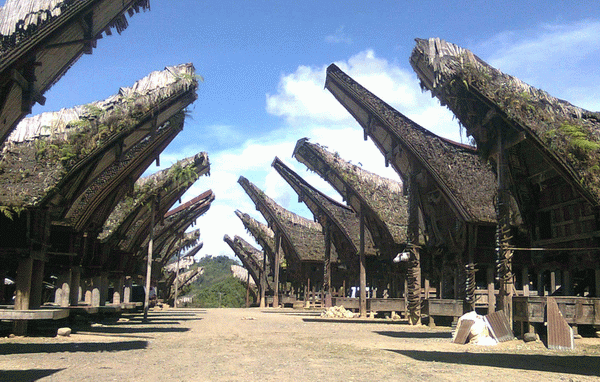
South Sulawesi Province is famous for its tradition. For travelers, Tana Toraja Regency is the best destination to explore the richness of the culture of such province. Both local and foreign tourists would love to explore it. Once you reach the location, you may feel a mystical atmosphere. It is because the villagers take care of their culture well. The best features in Tana Toraja are Tongkonan, ancient burial sites, and an uncommon way of living. Not to mention the nuance is serene and shady. Many beautiful landmarks are scattered in this region. With all these features, UNESCO has included it as one of the world’s cultural heritage.
The Nuance Tongkonan is the best feature in Tana Toraja Regency. It is actually a formation of traditional houses. The size varies and the shape is unique. You can only see this kind of houses in South Sulawesi Province, especially Tana Toraja. Near to these houses, you are likely to find tombstones. The locals often bury their relatives in a tree, wall, and other strange locations. It has become a culture, actually. Due to this reason, any villages in this region emit a mystical aura.
Exploring Tana Toraja Regency Many tourist attractions are available in Tana Toraja Regency. It is because the locals often perform numerous traditional ceremonies. In fact, you can enjoy local dances. Apart from such cultural lures, Tana Toraja holds an interesting history. The locals believe their ancestors came down from the heaven using sky stairs. However, some historians didn’t approve this story. Instead, they said the ancestors of the locals were immigrants. These people came from Tongkin Cape. That means there was an acculturation back then.
Tana Toraja Regency is the home of interesting tourist spots. Travelers can get around and visit several vacation destinations such as Londa, Lemo, and Tampang Allo. All of them share the same feature, which is the traditional cemetery. You may expect some bones on the holes of a particular wall. It sounds creepy, doesn’t it? However, visiting the local tombstones is considered a new experienced for travelers. In fact, it is the main reason why many tourists visit Tana Toraja.
The best time to visit Tana Toraja Regency is in Juni or December. At these times, you are able to witness a special ceremony performed by the locals. They sacrifice tens of buffalos or pigs as the part of burial procession. The legend has it. These animals will accompany the dead person to reach the heaven. What’s next? It is as simple as exploring the villages in Tana Toraja. They have beautiful Tongkonan and culture.
Nearby Attractions
- Sarambu Waterfall
- Buntu Burake
How to Get There A trip to Tana Toraja Regency from Makassar City takes about 7 hours. The distance is 305 km. For a faster trip, you can take Poros Barru – Makassar Street. For outsiders, the first destination would be Makassar City. In fact, it is the capital of South Sulawesi Province. If you come by plane, you should head to Sultan Hasanuddin Airport. From there, take a local transportation service to Tana Toraja. That’s all.
Where to Stay
- Pantan Toraja Hotel
- Puri Artha Hotel
- Sahid Hotel
Not Only Butterflies, These Are 7 Tourist Destinations in Bantimurung National Park
Bantimurung National Park is one of the tourist destinations that presents many types of natural objects. The nature tourism steep limestone hill valley with tropical vegetation, waterfalls, and cave; which are the habitat of various fauna species, including butterflies. This National Park features butterflies as its main attraction. Here, there are at least 20 types of protected butterflies from at least 250 species of butterflies that exist. However, not only butterflies, various types of interesting tourist activities can be done in this national park. Helena Sky BridgeThe Helena Sky Bridge…
Visiting Bantimurung National Park, The Kingdom of Butterfly
Bantimurung National Park was established as a nature conservation area in 2004. The park with about 43,770 hectares width is located in Bantimurung District, Maros, South Sulawesi. There are natural destination of steep limestone hill valleys with tropical vegetation, waterfalls, and caves which the habitat of various fauna species, including butterflies. Alfred Russel Wallace dubbed Bantimurung as The Kingdom of Butterfly. He gave this nickname when he researched this location between 1856-1857. According to Wallace’s research, for a year in that location there are at least 250 species of butterflies.…
Takapala Waterfall, Gowa
Takapala Waterfall has 109 meters high with huge volume of water that pour out daily, and becomes bigger during rainy season. The outpouring of water that hit the big chunks of rocks in the bottom causing a roar and a splash of water that form a thin haze as far as 20 m. Not far from Takapala there are also other waterfall names Ketemu Jodoh Waterfall; the name of Ketemu Jodoh means meeting a soulmate. The location of the waterfall is only separated by a road that leading to the…
Selayar Island
Selayar Island Selayar is an island that located in Selayar islands regency, South Sulawesi. Selayar Island is separated from the mainland of South Sulawesi with an area of ??approximately 2000 km2 that stretches from north to south between Sulawesi island and Takabonerate island. At Selayar Islands regency, there are 123 islands, and 62 islands of those are inhabited. The west coast and the northern part of the island is in the form of rocks and steep cliffs, while the east coast and most of the south coast is a form…
Indonesia Tourism
- _Kalimantan
- Tours & Travel
- _Destinations
- _Travel Guides
- _Travel News
- _Travel Tips
- All Readings
Toraja Culture: A Unique and Fascinating Culture in Indonesia
Toraja culture is a unique and fascinating culture found in the mountainous region of South Sulawesi, Indonesia. The Toraja people are known for their rich cultural heritage, which revolves around animism, indigenous beliefs, and elaborate funeral rituals.
Toraja culture is a complex and intricate belief system that is deeply rooted in animism, ancestral worship, and elaborate rituals. It is a fascinating culture that has attracted attention from scholars, tourists, and anthropologists alike, offering insights into the unique ways in which human societies understand and interact with the spiritual world.
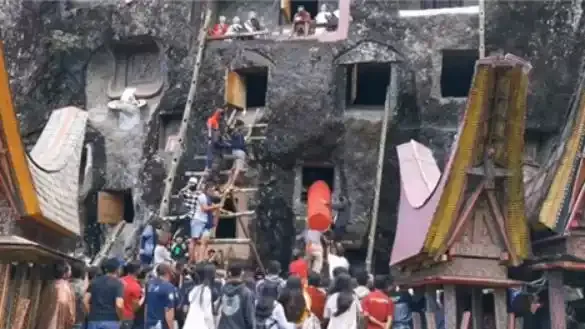
Here are some key aspects of Toraja culture:
Funeral Rituals
Funeral rituals are a significant aspect of Toraja culture and are known for their elaborate and intricate nature. When a member of the Toraja community passes away, the funeral ceremony is considered a crucial event to ensure a smooth transition to the afterlife. Here are some key aspects of Toraja funeral rituals:
- Funeral Preparation : The preparation for a Toraja funeral can take several days or even weeks. It involves extensive planning, coordination, and the participation of the entire community. The family of the deceased typically consults with a local spiritual leader or a village elder to determine the appropriate rituals and ceremonies.
- Animal Sacrifices : Animal sacrifices play a central role in Toraja funeral rituals. The type and number of animals sacrificed depend on the social status and wealth of the deceased and their family. Buffalo and pigs are the most commonly sacrificed animals, and the more animals sacrificed, the higher the status of the deceased and their family is perceived to be. Animal sacrifices are believed to provide a guide for the deceased to navigate the afterlife and also to honor and appease the spirits.
- Rituals and Ceremonies : Toraja funeral rituals typically involve a series of ceremonies and rituals. These can include the washing, dressing, and grooming of the deceased, as well as the construction of temporary bamboo or wooden structures called "tongkonan" to house the deceased during the funeral. These structures are elaborately decorated with symbolic carvings and paintings and are used for various rituals and ceremonies throughout the funeral.
- Feasts and Offerings : Feasting is an integral part of Toraja funeral rituals. Large quantities of food, including rice, meat, and other delicacies, are prepared and shared among the community and guests as a way to honor the deceased and to ensure their well-being in the afterlife. Offerings, including personal belongings of the deceased, are also made to accompany them on their journey to the spiritual world.
- Traditional Dances and Music : Traditional dances and music are an essential part of Toraja funeral rituals. They are performed to express grief, pay respects to the deceased, and accompany the soul of the departed to the afterlife. These dances are often accompanied by traditional musical instruments, such as gongs, flutes, and drums, creating a unique and rhythmic atmosphere during the funeral.
- Mourning Period : After the funeral ceremonies, the family of the deceased enters into a mourning period that can last for several days or even months, depending on the social status of the deceased. During this time, the family may observe various customs and restrictions, such as wearing black clothing, refraining from participating in celebrations, and avoiding certain activities as a sign of respect for the deceased.
- Symbolism and Beliefs : Toraja funeral rituals are deeply rooted in symbolism and beliefs. The Toraja people believe that the deceased continue to live in the afterlife and that the funeral ceremonies are essential for their safe passage to the spiritual world. The animal sacrifices, offerings, dances, and other rituals are believed to please and appease the spirits, ensuring the deceased's well-being and protecting the community from misfortune.
Toraja funeral rituals are complex and multi-faceted, reflecting the Toraja people's rich cultural heritage and their beliefs in the spiritual world. They are not only a way to honor and remember the deceased but also an important social and community event that brings people together and reinforces the bonds of kinship and community among the Toraja people.
Tongkonan Houses
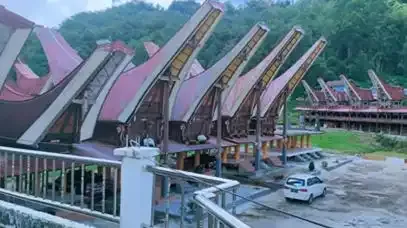
Tongkonan houses are traditional houses that are characteristic of the Toraja people's culture and architecture in South Sulawesi, Indonesia. These houses are unique in their design and hold significant cultural and social significance for the Toraja community. Here are some key features of Tongkonan houses:
- Architecture and Design : Tongkonan houses are built on stilts and have a boat-shaped roof, which is often adorned with buffalo horns, a symbol of wealth and status. The roofs are typically made from thatch or wooden shingles and are supported by massive wooden columns or pillars, often intricately carved with traditional motifs. The walls of the house are made from bamboo or wood, and the floors are usually made of split bamboo or wooden planks. The front of the house is typically adorned with a porch, and the entrance is decorated with a carved door.
- Symbolism and Meaning : Tongkonan houses are not just ordinary dwellings; they are considered sacred and hold deep cultural significance for the Toraja people. The shape and design of the house are believed to represent the ancestors and the spiritual world, with the roof resembling a ship that carries the souls of the deceased to the afterlife. The buffalo horns on the roof are believed to protect the house from evil spirits and bring good luck and prosperity to the family.
- Function and Usage : Tongkonan houses serve as the focal point of Toraja family life and are used for various purposes. They are not only dwellings but also social and cultural spaces where important family and community events take place, such as ceremonies, rituals, and gatherings. The front porch is often used as a place for socializing, while the interior of the house is typically divided into different areas for sleeping, cooking, and storage.
- Traditional Construction Methods : Building a Tongkonan house is a labor-intensive and communal effort that involves traditional construction methods. The wooden pillars and beams are carefully carved and fitted together without the use of nails, showcasing the skilled craftsmanship of the Toraja people. The thatch or wooden shingle roofs are meticulously woven and layered, providing insulation and protection from the elements.
- Cultural Heritage and Preservation : Tongkonan houses are not just homes for the Toraja people, but they are also considered an important part of their cultural heritage. The Toraja community takes great pride in their traditional architecture and makes efforts to preserve and maintain these unique houses. However, due to changing lifestyles, modernization, and economic factors, the construction of traditional Tongkonan houses has declined in recent years, and there are ongoing efforts to safeguard and promote their cultural significance.
Tongkonan houses are not only architectural marvels but also a living embodiment of Toraja culture, representing their beliefs, social structure, and sense of identity. They are a testament to the Toraja people's rich cultural heritage and continue to be cherished and celebrated as an important part of their way of life.
Aluk Todolo
Aluk Todolo, also known as Aluk To Dolo or Aluk To Lo, is the traditional belief system or religion of the Toraja people in South Sulawesi, Indonesia. It is a complex system of spiritual beliefs, customs, and rituals that govern various aspects of Toraja life, including birth, marriage, death, agriculture, and social structure. Here are some key aspects of Aluk Todolo:
- Cosmology and Belief in Ancestors : Aluk Todolo is based on the belief in the existence of a spiritual world inhabited by powerful ancestral spirits who continue to play a significant role in the lives of the Toraja people. These ancestral spirits are believed to have the power to influence events in the physical world and are venerated through various rituals and ceremonies. The Toraja people believe that their ancestors can bring blessings, protection, and prosperity to the community and are often consulted for guidance and assistance.
- Rituals and Ceremonies : Aluk Todolo involves a complex system of rituals and ceremonies that are performed during different stages of life and for various occasions. These rituals include elaborate funeral ceremonies, which are considered the most important and significant events in Toraja culture. Funeral ceremonies in Toraja culture are known for their grandeur and can involve extensive preparations, including the slaughtering of buffaloes and pigs, elaborate feasts, traditional dances, and the construction of intricate funeral monuments or tombs called "lakkian." Other rituals in Aluk Todolo include agricultural ceremonies, house-building ceremonies, and rites of passage for birth, marriage, and other life events.
- Social Structure and Hierarchy : Aluk Todolo also governs the social structure and hierarchy of the Toraja community. The Toraja society is divided into three main classes or castes: the nobility, the commoners, and the slaves. The nobility, known as "to makula," are believed to have a closer connection with the ancestral spirits and hold high social status. The commoners, known as "to minaa," are the majority of the population and follow the customs and rituals of Aluk Todolo. The slaves, known as "to matua," are considered the lowest class and are believed to have spiritual powers.
- Oral Tradition and Oral History : Aluk Todolo is primarily an oral tradition, passed down through generations by word of mouth. It is not a formalized religion with texts or scriptures but is transmitted through oral history, myths, legends, stories, and traditional practices. The Toraja people have a rich oral tradition, and the knowledge of Aluk Todolo is preserved and transmitted through oral teachings by religious leaders or priests called "pemangku."
- Syncretism with Other Religions : Over time, Aluk Todolo has been influenced by external religious beliefs, such as Hinduism, Islam, and Christianity, due to cultural interactions and historical influences. As a result, there are syncretic elements in Aluk Todolo, and some Toraja people may practice a combination of Aluk Todolo with other religions. However, Aluk Todolo continues to be an essential aspect of Toraja culture and identity, and many Toraja people still adhere to its traditional beliefs and practices.
Aluk Todolo is a complex and intricate belief system that is deeply intertwined with the culture, customs, and social structure of the Toraja people. It reflects their connection with their ancestors, their relationship with the spiritual world, and their way of life. Despite the influences of modernization and other religions, Aluk Todolo remains an important aspect of Toraja culture and continues to be practiced and preserved by the Toraja community.
Rambu Solo, also known as Rambu Soloq or Rambu Solo', is the traditional funeral ceremony of the Toraja people in South Sulawesi, Indonesia. It is considered one of the most significant and elaborate rituals in Toraja culture and is known for its grandeur, complexity, and unique customs. Rambu Solo is a multi-day event that involves various preparations, ceremonies, and rituals to send off the deceased to the afterlife and ensure their safe passage.
Here are some key aspects of Rambu Solo:
- Funeral Preparations : Rambu Solo involves extensive preparations that can take weeks or even months. The family of the deceased is responsible for making arrangements, which may include slaughtering buffaloes and pigs for feasts, gathering offerings, inviting guests, and preparing the necessary ceremonial objects. The family may also construct a temporary funeral house, called "tongkonan layuk," to accommodate the ceremonies and guests.
- Slaughtering of Buffaloes and Pigs : The slaughtering of buffaloes and pigs is an integral part of Rambu Solo. Buffaloes and pigs are considered sacrificial animals and are believed to accompany the deceased to the afterlife. The number of buffaloes and pigs slaughtered during Rambu Solo is considered a status symbol and reflects the social status and wealth of the deceased and their family. The higher the social status, the more buffaloes and pigs are slaughtered.
- Ceremonies and Rituals : Rambu Solo involves a series of ceremonies and rituals that are performed over several days. These may include:
- Ma'badong : The opening ceremony where offerings are presented to the deceased and prayers are offered.
- Ma'kapia : The buffalo fighting ceremony, where buffaloes are pitted against each other in battles that symbolize the struggles and challenges of life and death.
- Ma'rong : The ceremony to wrap the deceased in a burial cloth and place them in a coffin or sarcophagus, which is then placed in the tongkonan layuk.
- Ma'tambalapuang : The ceremony to transport the deceased to the burial site, which may involve carrying the coffin in a procession or using a traditional bamboo stretcher.
- Ma'pasilaga : The final ceremony where the deceased is laid to rest in the tomb or burial site, and offerings are made to ensure their safe passage to the afterlife.
- Feasts and Traditional Dances : Rambu Solo is also marked by elaborate feasts and traditional dances. The feasts are held to honor the deceased and to show gratitude to the guests who have come to pay their respects. Traditional dances, such as the "ma'randing" and "ma'badong," are performed during Rambu Solo as part of the ceremonial rituals and to entertain the guests.
- Social Gathering and Mourning : Rambu Solo is not only a funeral ceremony but also a social gathering for the Toraja community. It is a time for family members, relatives, and friends to come together, share stories, offer condolences, and express grief. Mourning is an important aspect of Rambu Solo, and the duration of mourning may vary depending on the social status of the deceased.
Rambu Solo is a unique and intricate funeral ceremony that reflects the cultural and spiritual beliefs of the Toraja people. It is a time-honored tradition that is deeply ingrained in Toraja culture and is considered a significant event to honor the deceased and ensure their safe passage to the afterlife. Despite the influences of modernization and other religions, Rambu Solo continues to be practiced and preserved by the Toraja community as a testament to their rich cultural heritage.
Arts and Crafts
The Toraja people are known for their rich artistic and craft traditions, which are deeply intertwined with their culture, customs, and beliefs. Here are some of the arts and crafts commonly found in Toraja culture:
- Woodcarving : Woodcarving is a prominent art form in Toraja culture. Skilled Toraja artisans create intricately carved wooden sculptures, statues, and reliefs that depict various cultural and spiritual motifs, including scenes from their mythology, ancestors, and agricultural practices. These woodcarvings are often used to adorn the traditional houses (tongkonan), burial sites, and other ceremonial structures.
- Textile Weaving : Textile weaving is another important craft in Toraja culture. Toraja women are known for their weaving skills and create exquisite textiles using traditional backstrap looms. These textiles, known as "kain" or "sarong," are often used as ceremonial attire during special occasions, including weddings, funerals, and other cultural events. They are typically handwoven using natural fibers and dyed with natural dyes, and feature intricate patterns and motifs that hold cultural significance.
- Metalwork : Metalwork is another traditional craft in Toraja culture. Toraja artisans create metal objects such as knives, jewelry, and ceremonial tools using techniques such as casting, forging, and engraving. These metal objects are often adorned with intricate carvings, etchings, and motifs that reflect the cultural symbolism and aesthetics of Toraja culture.
- Bamboo and Rattan Crafts : Bamboo and rattan are abundant natural resources in Toraja, and local artisans skillfully use these materials to create various crafts. These may include baskets, mats, trays, hats, and other household items, as well as ceremonial objects such as bamboo musical instruments and rattan shields. These bamboo and rattan crafts are not only functional but also hold cultural significance and are often used in Toraja ceremonies and rituals.
- Pottery : Pottery is also a traditional craft in Toraja culture. Toraja artisans create pottery using traditional methods, including hand-building and wheel-throwing. The pottery is typically used for daily household purposes, such as storing food and water, and may be adorned with decorative motifs and patterns.
- Painting : While not as prominent as other traditional crafts, painting is also practiced by some Toraja artisans. Toraja paintings often depict scenes from Toraja mythology, customs, and daily life, and are characterized by bold colors and unique styles.
Arts and crafts in Toraja culture are not just for aesthetic purposes but also hold cultural and spiritual significance. They are often used in various ceremonies, rituals, and celebrations to express Toraja's unique cultural identity, beliefs, and traditions. These traditional crafts are considered valuable cultural heritage and are passed down through generations, preserving Toraja's rich artistic traditions.
Social Hierarchy
Social hierarchy is an important aspect of Toraja culture, and it plays a significant role in their social structure, customs, and traditions. The Toraja society is organized into several distinct social classes or castes, each with its own roles, responsibilities, and privileges. Here is a general overview of the social hierarchy in Toraja culture:
- Nobility (Para'di) : The nobility, also known as Para'di, are the highest social class in Toraja society. They are considered the elite and hold significant influence and power. The nobility includes the descendants of the traditional rulers and aristocracy of Toraja, who are believed to have divine origins and are considered the closest to the gods. They often hold prominent positions in the community and are responsible for the governance and administration of Toraja society.
- Commoners (Tomina) : The commoners, also known as Tomina, are the majority of the population in Toraja society. They are involved in various occupations, such as farmers, craftsmen, traders, and laborers, and form the backbone of the Toraja community. They generally have fewer privileges and social status compared to the nobility but are respected for their contributions to the society.
- Slaves (Pa'piong) : Slaves, also known as Pa'piong, were historically part of the social hierarchy in Toraja society. They were considered the lowest social class and were owned by the nobility and commoners. However, with the abolishment of slavery in the early 20th century, this social class has largely disappeared from contemporary Toraja society.
It's important to note that while social hierarchy exists in Toraja culture, the Toraja people also value community harmony, mutual respect, and cooperation. They have a strong sense of community and kinship ties, and social status is not solely based on wealth or material possessions but also on one's reputation, wisdom, and contributions to the society. Toraja culture continues to evolve and adapt to modern times, but social hierarchy remains an integral part of their cultural heritage and identity.
Agriculture and Livelihoods
Agriculture is a central part of the livelihoods of the Toraja people, who are primarily farmers and rely heavily on agricultural activities for their subsistence and economic well-being. Here are some key aspects of agriculture and livelihoods in Toraja:
- Rice Cultivation : Rice is the main staple crop of the Toraja people, and rice cultivation is a fundamental agricultural activity in their region. Toraja farmers practice wet rice cultivation in terraced fields on the slopes of hills and mountains. They use traditional methods of planting, cultivating, and harvesting rice, including manual plowing, sowing, and harvesting with hand tools. Rice is not only a source of food but also holds cultural significance in Toraja society, being used in various rituals, ceremonies, and offerings.
- Coffee Cultivation : Coffee is another important cash crop in Toraja culture. Toraja farmers cultivate coffee in the highlands, where the cool climate and fertile volcanic soil are conducive to coffee production. Toraja coffee is known for its unique flavor profiles and is highly sought after in specialty coffee markets. Coffee cultivation provides additional income for many Toraja farmers and has become an important source of livelihood in recent years.
- Livestock Rearing : Livestock rearing is also an important aspect of agriculture and livelihoods in Toraja. Toraja farmers rear various types of livestock, including buffalo, pigs, chickens, and goats. Livestock are considered valuable assets and are used for various purposes, including ceremonial offerings, dowries in marriage customs, and as a source of food, income, and social status. Toraja people have a strong cultural connection with their livestock, and rearing and managing them is an integral part of their daily lives.
- Horticulture : Horticulture, including the cultivation of fruits, vegetables, and spices, is also practiced in Toraja. Toraja farmers grow a variety of crops such as bananas, oranges, cloves, nutmeg, and cinnamon, among others. These horticultural crops are used for local consumption, as well as for trade and income generation.
- Handicrafts and Tourism : Handicrafts and tourism also play a role in the livelihoods of the Toraja people. Toraja artisans create traditional crafts such as woodcarvings, textiles, metalwork, and pottery, which are not only used for cultural and ceremonial purposes but also sold to tourists and collectors as a source of income. Tourism has also become a significant economic activity in Toraja, with visitors coming from around the world to experience the unique culture, customs, and rituals of the Toraja people.
- Barter and Trade : Historically, barter and trade have been important economic activities in Toraja culture. Toraja people engage in barter and trade to exchange goods and services, including agricultural produce, livestock, crafts, and other commodities. Barter and trade networks are often established among Toraja villages, as well as with neighboring communities and regions.
Agriculture and livelihoods in Toraja are deeply intertwined with their cultural heritage, customs, and beliefs. The Toraja people have developed traditional knowledge and practices related to agriculture, livestock rearing, and handicrafts that are passed down through generations. While they have also adopted modern agricultural techniques and practices, traditional agricultural activities remain a vital part of their culture and way of life.
Post a Comment
Do you have any experiences you would like to share? Please feel free to leave a comment and share with us!
Our website uses cookies to improve your experience. Learn more
نموذج الاتصال

Sulawesi Travel Guide: 10 Things to Do, Itinerary + Tips!
Sulawesi is an amazing hidden gem island in Indonesia that I was lucky enough to spend three weeks traveling – Out of all the different islands I have visited in Indonesia, Sulawesi was the most culturally rich and diverse in climate. Traveling Sulawesi won’t be for everyone, since it’s a more remote and off-the-beaten-path destination, but I highly recommend it for those with an adventurous spirit.
FYI: Some links on my site are affiliate links that help support my site at no additional cost to you. Read more on my privacy policy page.
✔️ Sulawesi Quick Guide
🏝 best things to do.
- Attend a Traditional Funeral at Tana Toraja
- Go Nature Trekking in Tangkoko National Forest
- Stay on a Private Beach in the Togean Islands
- Scuba Dive in Bunaken Marine Park
- Visit Paisupok, the Clearest Lake in Indonesia
🚴♀️ How to Get Around
Sulawesi is a huge island, and requires a mix of local flights, driving services, ferries, and public transportation to fully navigate. I recommend taking a tour that organizes the transportation for you if it’s in your budget.
🚌 Best Tours
- 4-Day All-Inclusive Toraja Cultural Tour
- 15-Day All-Inclusive Sulawesi Adventure Tour
- 3-Day Tana Toraja Highlights Tour
✈️ How to Get There
You have to take a domestic flight to Sulawesi. Direct flights operate from all major cities in Indonesia to Manado on the North of the Island and Makassar in the south.
I don’t recommend buying a round-trip ticket for Sulawesi. the Tourist Trail has you traveling to/from North to South so it makes the most sense to book one flight going in to one airport and out the other.
⭐️ Is Sulawesi Worth Visiting?
Sulawesi is one of my favorite places in Indonesia, but it’s not for everyone. The infrastructure is much rougher than in Bali. If you’re interested in cultural tourism, there’s no better spot than Tana Toraja Funeral Village. If you’re an adventurous traveler I recommend exploring the entire island.

All About Sulawesi & Tana Toraja
Sulawesi is a major island in Indonesia that has started to make a name for itself as an amazing, off-the-beaten-path tourist destination. Home to world-class diving, nature reserves, tropical islands, waterfalls, etc, it’s amazing that most travelers visiting Bali have never heard of it.
In Sulawesi, the crown jewel for tourism is Tana Toraja Village. Often referred to as Indonesia’s “Funeral Village”, Tana Toraja is a traditional town in Indonesia where funerals are highly celebrated and very expensive. Similar to how in some cultures weddings are the highlight of one’s life, in Toraja, it’s all about their funerals!

Frequently costing as much as 50,000 US Dollars, funerals in Toraja are massive events that attract visitors from all over the world. In addition to the massive funeral celebrations, Toraja also has ritualistic burial sites that date back thousands of years. My favorite site to visit was Londa Funeral Cave, where you can explore massive natural catacombs and see how burial traditions have changed as Toraja became a majority Catholic culture and blended that with their original beliefs.

How Long Should You Spend in Sulawesi?
For just Tana Toraja, 3 – 5 days should be enough to see the highlights. If you want to explore the island of Sulawesi, I recommend at least 2 weeks. I spent 17 days, around 2.5 weeks, exploring the island of Sulawesi. While I think that was an adequate amount of time, there were still some amazing sites that we didn’t get to see. Truth be told, I could have easily spent a month or more in Sulawesi without getting bored!

Top 10 Best Things to Do in Sulawesi
1. visit tana toraja funeral village.
I enjoy cultural travel destinations, and visiting Toraja for a funeral ceremony takes the cake of all the experiences I’ve had in Indonesia. Toraja is also known as Indonesia’s “Funeral Village”, or less-charmingly, “Death Village”. While some cultures celebrate weddings, Toraja is all about funerals. A Torajan funeral ceremony can frequently cost the families 20-30,000 US dollars, as the ceremonies go on for days and involve sacrificing buffalo – Albino or spotted buffalos can cost $30,000, each !

They have a very different idea of death in Torajan culture than we do in the West. While traveling in Toraja, we saw relatives happy to see their deceased loved ones again during the Ma’Nene ceremonies, dressing up the corpse even joking around and putting sunglasses on it (!!!). If you’re squeamish about dead bodies, Toraja might not be your idea of a travel destination, but it’s certainly interesting.

👉 My Favorite Things to Do in Tana Toraja
✔️ Attend a “Ma’Nene” ceremony – Where the relatives of the deceased uncover the corpses of their relatives every 3 years and redress them.
✔️ Attend a Torajan Funeral – Typically lasting over 3 days, the funerals are large ceremonies. Bring cigarettes or some other offering for the families, and enjoy eating lunch with the locals.
✔️ Visit Londa Funeral Cave – Going caving through Londa, led by a guide and a gaslamp through the Torajan catacombs, was the most interesting thing we did in Sulawesi.
✔️ Visit Bori Kalimbuang – UNESCO world heritage site.

2. Stay On a Private Beach in the Togean Islands
The Togean Islands are a gorgeous hidden-gem archipelago off the coast of Sulawesi. You can reach the Togeans by taking an overnight local ferry from Gorontalo, or a 2-hour fast-boat from Ampana. The Togeans have a ton of resorts scattered around on different secluded beaches. Typically, resorts in the Togeans are all-inclusive, meaning you’ll have all of your meals at the resort.
🏨 Where to Stay: We chose Sera Beach Resort because it has one of the better private beaches, but due to its remote location in the Togeans, it has fewer amenities than those closer to the main port.
👉 Be Ready to Rough It: We only had electricity from 7-9 PM every night, there was no AC in the rooms, and no cellular access or wifi. I loved the Togeans, but they’re not for everyone!

3. Swim With the Stingless Jellyfish in the Togeans
You can swim with the wild stingless jellyfish in a brackish lake in the Togean Islands. Once upon a time, the lake was open to the ocean. That’s why the water is brackish rather than freshwater. As the millennia went by, the inlet naturally closed itself to the ocean and became a lake, containing jellyfish within it. Without sea turtles and other natural predators, the jellyfish in the lake evolved to lose their stingers, since they didn’t need them to defend themselves. I also swam with the stingless jellyfish in Siargao , in the Philippines, and the jellyfish lake in Sulawesi gets far fewer tourists – We were the only people there when we visited the jellyfish lake in the Togeans!

4. See the Wild Tarsiers at Tangkoko Nature Reserve
Tangkoko Nature Reserve is one of the only places in the world where you can see wild Tarsiers. The most popular way to visit Tangkoko Nature Reserve is by staying in a lodge near the park and taking sunrise and sunset nature walks. Tarsiers only come out around dusk, I immensely enjoyed our walk to the Tarsier’s tree where we got to watch them emerge from their nests as the sun went down. In addition to the Tarsiers, there are also Black Macaques. I know that there are plenty of monkeys in Bali , but something about seeing them up close and in the wild in Tangkoko was extra special.

5. Swim With the Whale Sharks in Gorontalo
Off the coast of Gorontalo, a port town where you can take an overnight ferry to the Togean Islands, you can swim with the wild whale sharks every morning. The Whale Sharks started coming off the coast of Gorontalo around 15 years ago when a fish processing plant was built in the town. Feasting on the waste from the plant, the Whale Sharks started annually migrating there. Ingenuous locals decided to capitalize on their new wildlife and now Whale Shark snorkeling tours have become one of the most popular things to do in the area.
N ote: Do know that the whale sharks are wild animals, and are not always at the morning snorkeling spot.

6. Go Scuba Diving in Bunaken National Marine Park
Bunaken National Marine Park, located in the Manado Bay of northern Sulawesi, stands out as one of the premier scuba diving destinations in the country. I’ve heard it compared to the renown Raja Ampat, but I wouldn’t know because I do not know how to dive! Even If you don’t scuba dive, the crystal-clear waters surrounding Bunaken offer fantastic snorkeling opportunities.

7. Take in the Volcano Views in Tomahon
Tomahon was an unexpected hit. We stayed there one night in between visiting Tangkoko Nature Reserve and Gorontalo, but I could have easily stayed a few more days. There are these amazing hotels in Tomahon that have views of the volcano and little photo nests set up for tourists. If you have more time in Tomahon, you can do a trek partially or all the way up the volcano.
🏨 Where to Stay in Tomahon
- Gardenia Country Inn – This gorgeous hotel with volcano views has a fairy-tale village aesthetic.

8. Visit an Extreme Market
Eating exotic animals isn’t really my idea of a good time, but I should mention that Sulawesi’s “Extreme Markets” are pretty famous. In the Extreme Market in Tomahon,, you can eat local Indonesian street food , as well as snakes, rats, bats, and sadly, dogs.

9. Swim in Saluopa Waterfall in Tentena
Saluopa Waterfall is the main attraction in Tentena, a stopover town between the Togean Islands and Tana Toraja Village. Featuring a cascading waterfall that drops into different tiers of natural pools you can swim in, Saluopa is a beautiful waterfall that rivals any I’ve visited in Indonesia.
Katie’s Tips ✶
Saluopa Waterfall is very popular in the local community, get there as soon as it opens if you want to have a swim to yourself!

10. Visit the Banggai Islands & Famous Paisu Pok Lake
Photos of the crystal clear waters of the Paisu Pok Lake have been making the rounds on Instagram lately, launching the remote Banggai Islands Archipelago into social media stardom. To get to the Banggai Islands you first need to reach Luwuk, which has a local airport where daily flights run from Manado (North Sulawesi), and Makassar (South Sulawesi). From Luwuk you can take a ferry to the Banggai Islands.

My Top Travel Tips for Sulawesi
✅ be ready to rough it a little bit.
Sulawesi was not an easy destination to travel in compared to Indonesia’s more convenient tourist paradises like Bali. We had to do a lot of lengthy travel days to fit everything we wanted to do in Sulawesi into the three weeks we were there. This included 14-hour local ferries, and overnight car and bus rides. As well as lots of nights in 3-star hotels in the middle of nowhere with no AC or internet -This is what we did, but it’s by no means necessary for all travelers. Sulawesi is huge, way bigger than Bali – There are areas of Sulawesi with 5-star hotels and local airports, and areas on tiny remote islands off the mainland with barely any electricity. It’s what you make of it. If you choose to take internal flights rather than overland transport and do a more simplistic travel itinerary of Sulawesi, you can cut down on a lot of the long travel days we did.
✅ I Wouldn’t Recommend Sulawesi for Solo Travel
As I mentioned before, Sulawesi doesn’t get that many travelers. I wouldn’t feel confident recommending it for solo backpackers if making friends on the road is important to you. We did meet some people in our three weeks in Sulawesi, but they were mostly couples and families.

Is Sulawesi Worth Visiting? My Take
I absolutely loved my three weeks traveling in Sulawesi and fully believe it to be worth the trip. I live in Bali , and while it’s paradise in my opinion, Bali is infamously crowded. In Sulawesi, you get the feeling that what you are seeing is more natural, untouched, and unique. I highly recommend Sulawesi overall for travelers who are interested in natural wonders, and Tana Toraja for those who love locations with cultural significance. I had visited Wae Rebo in Flores, another traditional village in Indonesia, and Toraja was just a step beyond – The way that everything there, from the food to the architecture, is so different from the rest of Indonesia, it feels like you’ve traveled to a new country!
Top 3 Toraja & Sulawesi Tours

🏆 4-Day All-Inclusive Toraja Cultural Tour
✔️ Includes round-trip private transport from Makassar Airport ✔️ Stay in a 4-star Tangkonan house hotel ✔️ Best value for money Toraja Tour

🏝 15-Day All-Inclusive Sulawesi Adventure Tour
✔️ All-Inclusive ✔️ Visits the highlights of Sulawesi ✔️ Full-Island trip from South to North ✔️ Includes diving and snorkeling tours

📆 3-Day Tana Toraja Highlights Tour
✔️ All-Inclusive ✔️ Best short trip to Toraja ✔️ Includes full round-trip transport from Makassar airport

How to Get to Sulawesi from Bali
The easiest way to get to Sulawesi from Bali is by taking a short flight. You can start your tour in the south, in Makassar city, or in the north, at Manado City. Both cities have airports that are served with flights to/from Bali multiple times a day.
How to Get to Tana Toraja
To get to/from Makassar to Toraja you can take an overnight bus designed for the many Torajans that commute to Makassar. These buses are VIP and super comfortable, with padded beds and blankets. Or, if you don’t have the time for a bus, you can also take a short flight to Toraja’s new airport.
💰 Budget Tip! Tours to Tana Toraja usually include a private car transfer from Makassar, when booked independently this can cost up to $250.

Sulawesi Travel Itinerary
There’s a set tourist trail in Sulawesi, usually starting from the north of the island in Manadao or the south in Makassar. We started our travels in the North, and here’s an example of Sulawesi’s tourist trail going from North to South: You can edit the amount of time you spend in each location, but this is the most you can fit into a 14-day Sulawesi itinerary:
- Fly into Manado
- Go scuba diving at Bunaken – 2 Nights
- Visit Tangkoko National Park to see macaques and tarsiers – 2 Nights
- Stay at a volcano-view hotel in Tomahon – 1 Night
- Go swimming with the whale sharks in Gorontalo – 1 Night
- Take the overnight ferry from Gorontalo to the Togean Islands – 3 Nights
- Swim with the stingless jellyfish in the Togeans
- Take a speedboat to Ampana, drive to Tentena – 1 Night
- Visit the waterfall and stay a night in Tentena
- Stay in Toraja for a traditional funeral – 3 Nights
- Take the overnight bus or fly to Makassar, where you can depart back to Bali or other Indonesian islands.
Tip! You can reverse this itinerary and start your tour
Is Sulawesi Safe for Tourists?
I never felt unsafe traveling in Sulawesi, neither as a female nor as a foreigner. That being said, no international travel comes without risks. Sulawesi is the least developed island I’ve been to in Indonesia, and it’s also the least touristed. Frequently, we would be included in just a handful of foreigners wherever we were – and we were traveling to all the top tourist spots on the island!
There was a lot of charm to this, being off the beaten path and all, but there were also some downsides to standing out so much. For example, while we were able to rent scooters like in Bali and drive ourselves around Tana Toraja, we were told that a foreigner driving in Gorontalo would be unheard of. We would stand out too much, and no one was willing to rent to us.
You also get a lot of attention as a foreigner in Toraja. Every other second we were being dragged to take photos with people – Then a photo shoot would last 15 minutes, at least, as everyone wanted a picture with the odd foreigners 😂.
Katie Caf, founder of Katie Caf Travel, is a seasoned travel expert who has explored over 30 countries and lived abroad in places like Egypt, Morocco, Mexico, India, Indonesia Thailand, Europe, and the USA. Her goal is to help other traveler see the world by providing first-hand accounts of what to expect on the road.
Leave a Reply Cancel reply
Your email address will not be published. Required fields are marked *
Save my name, email, and website in this browser for the next time I comment.

Toraja Traditions Delving into the Sacred Rites and Rich Heritage of Suku Toraja
I. Introduction
A. Brief overview of the Toraja people (Suku Toraja) The Toraja people, commonly referred to as Suku Toraja, are one of the ethnic groups of Indonesia , hailing predominantly from the mountainous region of South Sulawesi. Rich in indigenous heritage in Indonesia , the Toraja stand out due to their unique cultural practices and beliefs. Their ancestral practices and tales are an embodiment of the ethnographic diversity in Indonesia .
B. Significance of Toraja culture in the context of Indonesia travel In the grand tapestry of cultural diversity in Indonesia , the Toraja culture holds a special place. Their ancestral communities, indigenous languages, and traditional knowledge attract travelers from across the globe, making them an essential part of the Indonesian travel narrative. Their unique traditions enhance the richness of Indonesia’s cultural tourism landscape.

II. Historical and Cultural Roots
A. Historical origins and heritage of the Toraja people Rooted deep in the annals of Indonesian history , the Toraja people trace their origins to ancient settlers of the Sulawesi highlands. They possess a unique ethnic identity in Indonesia , with a culture that has been passed down through countless generations. Their indigenous storytelling and ancestral practices, preserved through oral traditions, offer a vivid insight into their heritage.
B. Connection between Toraja culture and Indonesian history The Toraja culture is intertwined with Indonesian history , acting as a testament to the country’s rich tribal cultures. Their enduring traditions, from architecture to ceremonies, are reflective of the cultural preservation among Indonesian tribes . They serve as living relics of Indonesia’s past, offering a tangible connection to bygone eras.
C. Influence of Toraja culture on contemporary Indonesia travel Toraja’s unique cultural practices, from their indigenous art and crafts to their age-old rituals, play a significant role in shaping Indonesia’s tribal tourism landscape. Tourists, intrigued by the traditional knowledge of Indonesian tribes , often find the Toraja experience both enlightening and captivating, making it a highlight of their Indonesian journey .

III. Diverse Toraja Communities
A. Different Toraja subgroups and regions The Toraja community, though unified in their core beliefs and practices, consists of several subgroups, each with its distinct characteristics. These subgroups, shaped by their geographical locations and historical influences, contribute to the rich ethnic identities in Indonesia .
B. Geographical distribution of Toraja communities Primarily residing in the South Sulawesi region, the Toraja communities are scattered across the mountainous terrains and lush valleys. Their settlements, often isolated from each other by natural barriers, have led to the development of unique customs and rituals in Indonesia , specific to each subgroup.
C. Unique cultural aspects of specific Toraja subgroups Each Toraja subgroup, with its distinctive traditions, enriches Indonesia’s travel experiences. For instance, some regions might be known for their specific dance forms, while others might be renowned for their unique architectural styles. These variances, deeply rooted in their ancestral practices, offer travelers a multifaceted view of the Toraja culture .

IV. Toraja Rituals and Ceremonies
A. Overview of traditional Toraja practices and customs The Toraja people are renowned for their elaborate rituals and ceremonies. Their rites of passage, particularly the funeral ceremonies, are intricate events that can span several days. These rituals, deeply rooted in their indigenous storytelling, provide an insight into the Toraja worldview.
B. Elaborate rituals, ceremonies, and festivals One of the most well-known Toraja ceremonies is the funeral rite, where buffalo sacrifices and traditional dances play an integral role. Festivals, celebrating various aspects of life and nature , are also prevalent, with each embodying the unique traditions of Indonesian tribes , particularly of the Toraja.
C. Indigenous art, crafts, and architecture Toraja’s traditional architecture, particularly their tongkonan (ancestral houses), showcases their exceptional artistic prowess. With buffalo horn-shaped roofs and intricate carvings, these structures are a testament to the indigenous art and crafts of Indonesia . These architectural marvels, coupled with their vibrant textiles and handicrafts, appeal to tourists seeking authentic cultural experiences.

V. Toraja Cuisine and Culinary Traditions
A. Traditional Toraja dishes and recipes Toraja cuisine is a delightful mix of flavors, ingredients, and techniques that highlight the cultural diversity in Indonesia . Traditional dishes like “Pa’piong” (meat or fish cooked with spices inside bamboo) showcase their unique approach to cooking. Another specialty is the “Pamarrasan,” a black spice meat dish, colored using burnt coconut. These dishes not only tantalize the taste buds but also tell stories of the indigenous communities in Indonesia .
B. Culinary experiences for travelers For travelers, tasting Toraja cuisine is an immersive experience, reflecting the native customs and rituals in Indonesia . Local markets in Toraja regions, like the Pasar Bolu in Rantepao, offer a variety of indigenous ingredients and dishes. Engaging with the locals over a meal, travelers can get an authentic taste of Torajan life and its rich traditions.
C. The role of Toraja cuisine in enhancing Indonesia travel Cuisine plays a pivotal role in representing the cultural and ethnolinguistic groups of Indonesia . In this context, Toraja culinary practices offer a unique gastronomic journey . From farm to table, the whole culinary process narrates the tales of ancestral practices of Indonesian tribes , especially the Toraja, enhancing the overall travel experience in the country.

VI. Exploring Toraja Villages
A. Authentic Toraja village experiences for tourists The Toraja villages, with their stunning tongkonans, terraced rice fields, and sacred burial sites, present a vivid tableau of Torajan life. Exploring these villages allows tourists to witness the indigenous heritage in Indonesia firsthand. Villages like Ke’te Kesu and Londa offer insights into ancestral communities of Indonesia , making them must-visit destinations .
B. Staying in Toraja homestays Homestays provide an intimate experience of Torajan culture . Staying with a local family, travelers get a firsthand view of daily Toraja life – from their morning rituals to their indigenous storytelling sessions in the evenings. These stays foster a deep connection between tourists and the native peoples of Indonesia , offering mutual cultural exchanges.
C. Immersion in daily life in Toraja communities Immersing oneself in the daily rhythms of Toraja life can be an enlightening experience. Whether it’s participating in daily chores, attending a local ceremony, or learning the nuances of their indigenous art and crafts, every moment spent in these communities adds depth to the Indonesia travel narrative.

VII. Adventure and Eco-Tourism
A. Adventure opportunities in Toraja regions The picturesque landscapes of Toraja offer numerous adventure opportunities. From trekking across the scenic hills to exploring hidden caves, the region promises thrilling experiences for adventure enthusiasts. The diverse terrains reflect the geographical distribution of the diverse Toraja communities and cater to various adventure activities.
B. Toraja’s contribution to eco-tourism initiatives Toraja, with its pristine natural beauty and sustainable tribal practices, plays a significant role in Indonesia’s eco-tourism initiatives. The community’s respect for nature , combined with their traditional knowledge of Indonesian tribes , provides a framework for sustainable tourism that both educates and conserves.
C. How Toraja culture and natural beauty enhance adventure and eco-tourism in Indonesia Blending cultural experiences with nature-based activities, Toraja offers a holistic approach to eco-tourism. Witnessing the unique traditions of Indonesian tribes , specifically the Toraja, against the backdrop of lush landscapes, waterfalls , and rice terraces, enhances the appeal of adventure and eco-tourism in the region.

VIII. Conservation and Sustainable Tourism
A. Efforts to preserve Toraja culture and the environment Given the rich cultural heritage and pristine natural landscapes of Toraja, there have been concerted efforts to preserve both. The tongkonans, with their unique architecture, are maintained and passed down generations, representing the enduring indigenous heritage in Indonesia . Simultaneously, community-led initiatives, often in collaboration with environmental organizations, ensure that the natural beauty of the Toraja regions remains unspoiled for future generations.
B. Collaborative initiatives with tourists in conservation Engaging tourists in conservation has proven to be an effective strategy in Toraja. By promoting responsible tourism, visitors are educated about the importance of preserving both the environment and the rich cultural heritage of the region. Workshops, guided tours, and community interactions shed light on the ancestral practices of Indonesian tribes , fostering a sense of respect and responsibility among tourists.
C. Balancing tourism with cultural preservation in Indonesia travel with Toraja communities A sustainable approach to tourism ensures that while the Toraja regions benefit economically, their cultural and environmental integrity remains intact. Local guidelines, often formulated in consultation with tribal elders, provide travelers with insights into culturally sensitive behaviors, ensuring that their presence is non-intrusive and beneficial for the community.

IX. Challenges and Considerations
A. The impact of modernization on Toraja culture Like many indigenous communities around the world, the Toraja face challenges from rapid modernization and globalization. While technological advancements offer improved living standards, there’s a genuine concern about younger generations moving away from traditional ways, causing potential erosion of the ethnographic diversity in Indonesia .
B. Ethical and responsible tourism practices in Toraja regions For tourism to be beneficial for both the Toraja community and the tourists, it must be conducted ethically. This means respecting local customs, understanding the significance of sacred sites, and not commodifying cultural experiences. Responsible tourism practices ensure that the cultural diversity in Indonesia is appreciated and not exploited.
C. Future challenges and the sustainability of Indonesia travel with Toraja communities The balance between accommodating an increasing number of tourists and maintaining cultural authenticity is delicate. As more travelers seek authentic experiences, there’s a pressing need to ensure that tourism infrastructures are developed sustainably, keeping the unique traditions of Indonesian tribes at the forefront of planning and execution.
X. Conclusion
A. Recap of the significance of Toraja culture in Indonesia travel The Toraja people, with their rich history , unique rituals, and stunning landscapes, offer a window into the vibrant tapestry of Indonesia’s cultural heritage. Their significance in the context of Indonesian travel cannot be overstated, as they provide travelers with unparalleled insights into the ancestral communities of Indonesia .
B. Encouraging responsible and culturally sensitive tourism As Indonesia continues to be a sought-after travel destination, it’s imperative for tourists to approach their journeys with sensitivity and respect. By understanding and valuing the indigenous storytelling, art, and traditions of places like Toraja, travelers can contribute positively to the communities they visit.
C. The lasting impact of Toraja cultural experiences on travelers Visiting Toraja isn’t just a journey across landscapes but also through time, rituals, and traditions. The memories made here, informed by the rich tapestry of Toraja culture , leave an indelible mark on travelers, reminding them of the intricate web of stories, beliefs, and practices that bind humanity together.
Leave a Comment Cancel reply
You must be logged in to post a comment.
You might also like
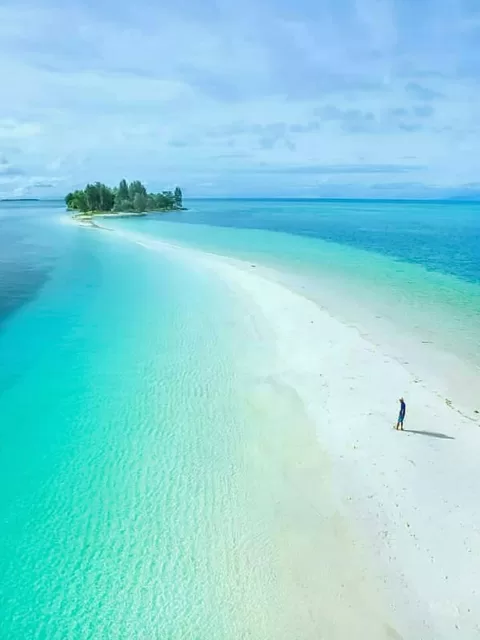
Morotai Island: Off the Beaten Path, Untamed, and Unforgettable
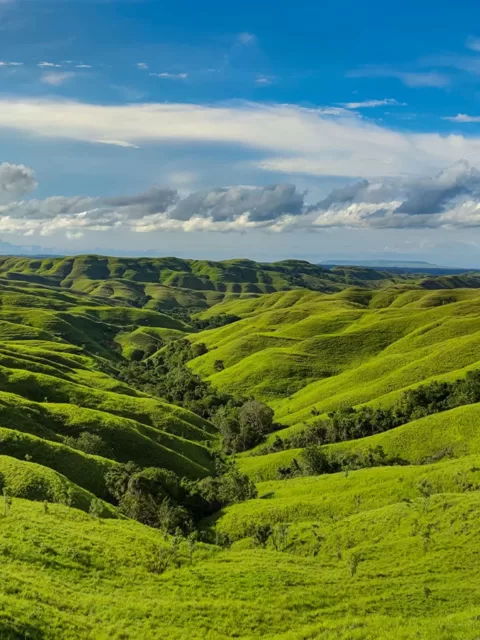
Wairinding Hill: Panoramic Paradise – Hike, Explore, & Discover
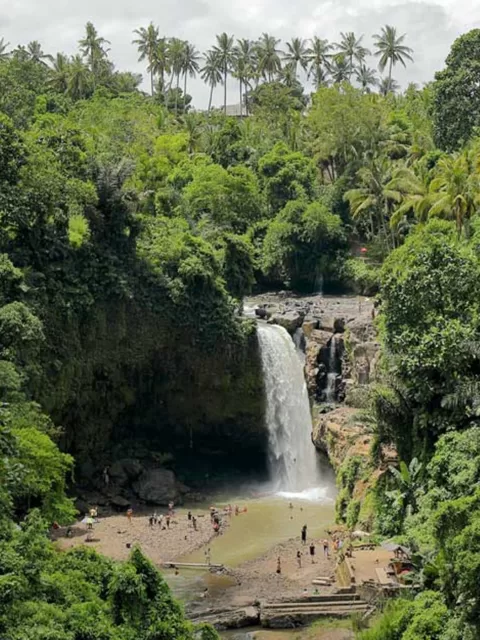
Tegenungan Waterfall: Dive into Bali’s Untamed Beauty and Reconnect with Nature
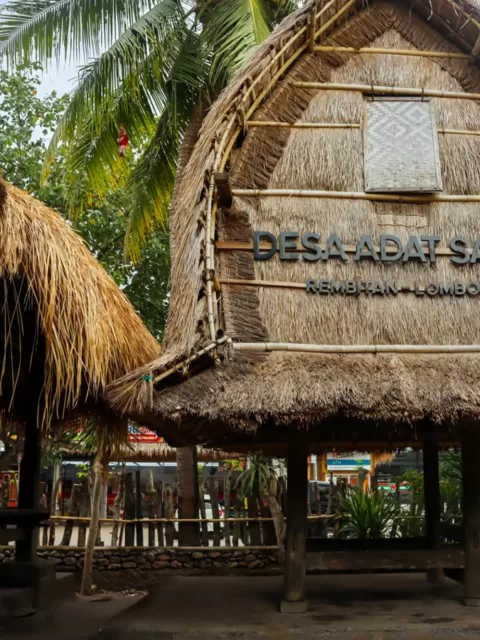
Sade Village, Lombok: Your Guide to Experiencing Authentic Sasak Culture
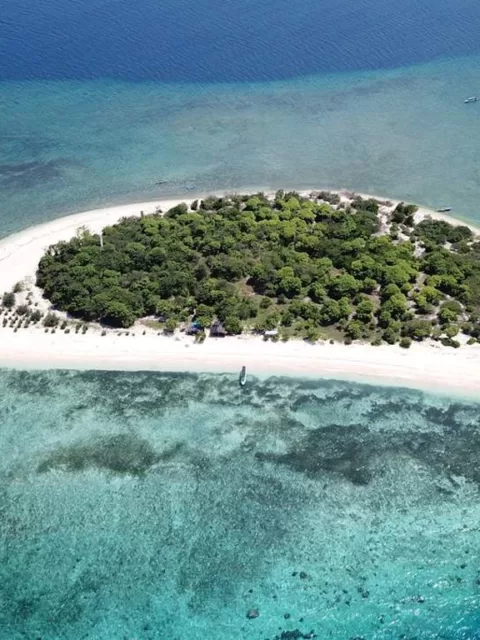
Tabuhan Island Banyuwangi: Paradise Unplugged in the Bali Strait
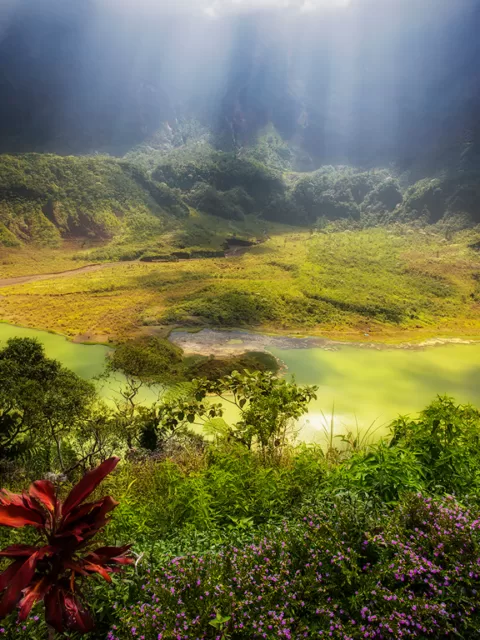
From Fire to Paradise: The Rebirth of Mount Galunggung
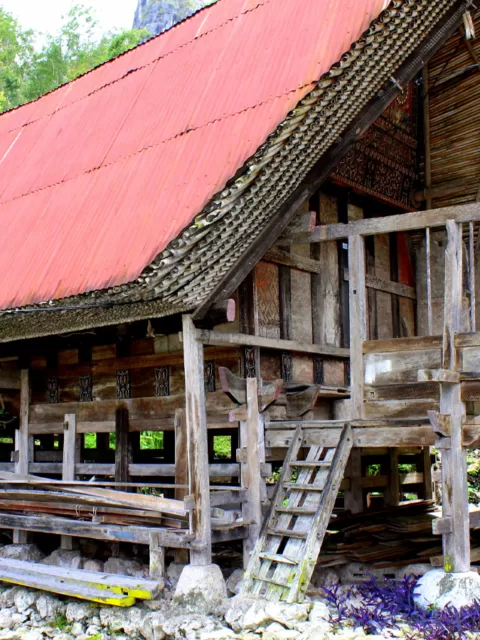
Sillanan Village: A Living Museum of Tana Toraja Culture & Coffee Cultivation
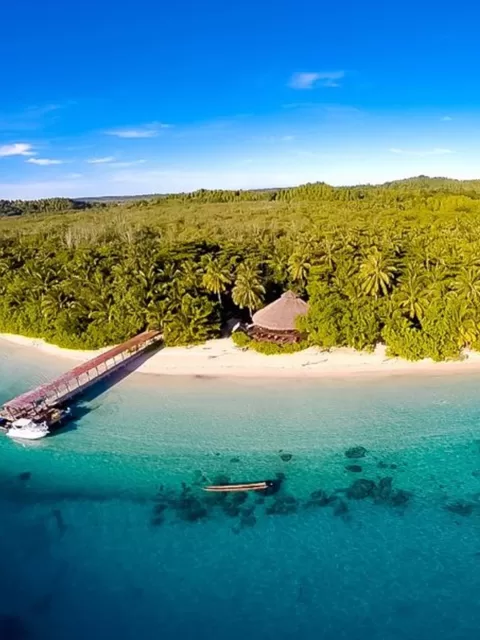
Mentawai Island: The Ultimate Guide to Surfing, Diving, and Cultural Immersion
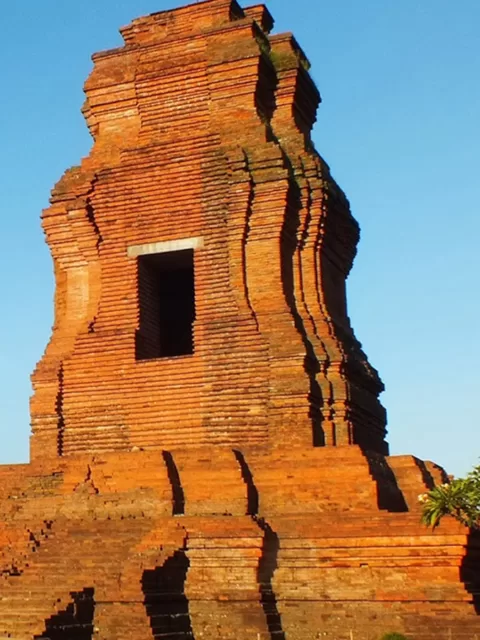
Brahu Temple: A Majestic Relic of the Majapahit Dynasty
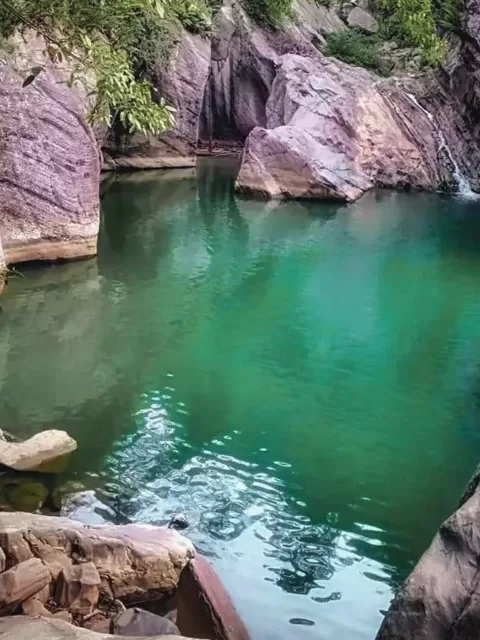
Exploring Sanghyang Heuleut: Serenity in the Heart of Nature
The Best Time to Visit Toraja, Indonesia for Weather, Safety, & Tourism
The best times to visit Toraja for ideal weather are
December 17th to February 4th
based on average temperature and humidity from NOAA (the National Oceanic and Atmospheric Administration). Read below for more weather and travel details.
Toraja Travel Guide
Temperature.
- Perceived Temperature
- Rain and snow
- Humidity and wind
- The busiest and least popular months
- Overall travel experience by time of year
Other Toraja Travel Info
Weather in toraja.
Average temperatures in Toraja vary very little. Considering humidity, temperatures feel hot for most of the year with a chance of rain throughout most of the year. The area is far less temperate than some — in the 6th percentile for pleasant weather — compared to tourist destinations worldwide. Weeks with ideal weather are listed above . If you’re looking for the very warmest time to visit Toraja, the hottest months are June, August, and then July. See average monthly temperatures below. The warmest time of year is generally early June where highs are regularly around 91.6°F (33.1°C) with temperatures rarely dropping below 72.6°F (22.6°C) at night.
Toraja Temperatures (Fahrenheit)
Toraja temperatures (celsius), “feels-like” temperatures.
The way we experience weather isn’t all about temperature. Higher temperatures affect us much more at higher humidity, and colder temperatures feel piercing with high winds. Our perceived temperatures factor in humidity and wind chill to better represent how hot or cold the day feels to a person.
Toraja Perceived Temperature (F)
Toraja perceived temperature (c), average toraja temperatures by month.
Daily highs (averaged for the month) usually give the best indication of the weather. A significantly lower mean and low generally just means it gets colder at night.
Show Fahrenheit
Show celsius, precipitation (rain or snow).
If dry weather is what you’re after, the months with the lowest chance of significant precipitation in Toraja are September, October, and then August. Note that we define “significant precipitation” as .1 inches or more in this section. The lowest chance of rain or snow occurs around early to mid October. For example, on the week of October 8th there is 1 day of precipitation on average. By contrast, it’s most likely to rain or snow in late April with an average of 5 days of significant precipitation the week of April 23rd.
Chance of Precipitation
The graph below shows the % chance of rainy and snowy days in Toraja.
Snow on the Ground
The graph below shows the average snow on the ground in Toraja (in).
Average Rain and Snow by Month
Show inches, show centimeters, humidity and wind.
Toraja has some very humid months, and high humidity throughout the year. The least humid month is October (70.4% relative humidity), and the most humid month is June (78.6%).
Wind in Toraja is usually extremely calm . The windiest month is February, followed by September and March. February’s average wind speed of around 2.5 knots (2.9 MPH or 4.7 KPH) is considered “light air.” Maximum sustained winds (the highest speed for the day lasting more than a few moments) are at their highest in early February where average top sustained speeds reach 7.1 knots, which is considered a gentle breeze.
Relative Humidity (%)
The graph below shows the average % humidity by month in Toraja.
The graph below shows wind speed (max and average) in knots.
Average Wind Speeds
Show wind speeds.
All wind speeds are in knots. 1 knot = 1.15 MPH or 1.85 KPH.
Show Relative Humidity by Month
Is it safe to travel to toraja.
Our best data indicates this area is somewhat safe, but with extra warnings in a few regions. As of Dec 04, 2023 there are travel warnings and regional advisories for Indonesia; exercise a high degree of caution and avoid some areas. Check this page for any recent changes or regions to avoid: Travel Advice and Advisories . This advisory was last updated on Nov 14, 2023.
The Busiest and Least Crowded Months
The busiest month for tourism in Toraja, Indonesia is May, followed by August and July. Prices for hotels and flights will be most expensive during these months, though you can save if you purchase well in advance. Tourists are unlikely to visit Toraja in December. Those willing to visit at these times will likely find it the least expensive month.
Estimated Tourism by Month
Most popular months to visit, overall toraja travel experience by season, fall (march through may).
Humidity and temperatures combine to make this season feel warm. Highs range from 90.2°F (32.3°C) and 84.1°F (28.9°C) with warmer temperatures in the later months. Rain is frequent with 13 to 17 days of significant precipitation per month. Fall is the second busiest for tourism, which makes it a good time for those looking for things to do.
Winter (June through August)
The middle-year months have very comfortable weather with high temperatures that are quite warm. These months see moderate precipitation with 11 to 13 days of precipitation per month. June – August is the busiest season for tourism in Toraja, so lodging and other accommodations may cost more than usual.
Spring (September through November)
Spring daily highs range from 91.6°F (33.1°C) and 87.1°F (30.6°C), which will feel very nice given the humidity and wind. It rains or snows a significant amount: 7 to 11 days per month. Tourism is the slowest during these months due to the weather, so hotels may be affordably priced.
Summer (December through February)
Weather is perfect this time of year in Toraja to be enjoyable for warm weather travelers. The average high during this season is between 88.6°F (31.4°C) and 83.8°F (28.8°C). On average, it rains or snows a very great amount: 12 to 15 times per month. These times of year are fairly slow with tourists.
Best Times to Travel › Indonesia › Toraja, Indonesia
Similar Destinations
- Rantepao, Indonesia
- Parepare, Indonesia
- Watampone, Indonesia
- Makassar, Indonesia
- Makasar, Indonesia
- Sulawesi, Indonesia
- Tanete, Indonesia
- Palu, Indonesia
- Bira, Indonesia
- Kendari, Indonesia
Popular Destinations
- Playa del Carmen, Mexico
- Hangzhou, China
- Ankara, Turkey
- Share full article

The World Through a Lens
In Indonesia, a Blurred Boundary Between the Living and the Dead
The Toraja people of southern Sulawesi, one of Indonesia’s largest islands, are known for their elaborate death rituals, which include preserving and exhuming the dead.
Relatives retrieve a coffin during a ceremony in the village of Lembang Ma’dong. Credit...
Supported by
Photographs and Text by Putu Sayoga
- Published Dec. 14, 2020 Updated Jan. 9, 2021
Editor’s note: This photo essay contains images of human remains that may disturb some readers.
Sobbing beside her family’s grave in the mountainous subdistrict of Rindingalo, Odiya Sulu, 38, clutched a photograph of her mother and spoke haltingly about how much she missed her. Her mother, Elis Sulu, had died in 2015 at age 65. But a year later, in 2016, when her coffin was carried outside and opened by relatives, her body was remarkably intact — the results of local preservation techniques.
Still weeping, Ms. Sulu stroked her deceased mother’s face. Her brother placed his hand gently on one shoulder. The daughter soon felt calmer — calm enough, at least, to fetch a broom and begin cleaning the grave while her mother’s body lay in the sun.

Odiya Sulu and her family are members of the Toraja people of southern Sulawesi, one of Indonesia’s largest islands. Known for their elaborate death rituals , which involve preserving and exhuming the dead and sacrificing livestock, Torajans invest vast sums of time and money on the funerals (and subsequent rites) of their loved ones.
Many families embrace the presence of tourists — and all of the families depicted in this story welcomed my taking and sharing of these photographs. (In more recent years, since the rites have gained international attention, it has become easier for outsiders to learn when and where rituals will be held. In some cases, the schedule for rituals is even uploaded on the local government’s tourism website.)
When I visited North Toraja for the first time, in August 2016, the Sulu family was performing a ritual called ma’nene’, during which the bodies of deceased family members — long after their elaborate funerals were held — are exhumed, cleaned and left in the sun to dry before being dressed in new clothes.
I was born and raised in Indonesia and have worked for nearly a decade here as a documentary and travel photographer. I’d heard about Torajan culture and had long dreamed of chronicling their unique traditions. But Rindingalo wasn’t easy to reach. From Makassar, the largest city on Sulawesi, an eight-hour bus ride carried me to the small town of Rantepao, the capital of the North Toraja district. From there, I rode a motorbike another hour and a half before arriving in Rindingalo.
I spent my first night in a village called Pangala, then decided to spend the next few days touring the nearby mountains, hoping to find a family who was performing ma’nene’ that week. On my fourth day there, I met Odiya Sulu and her relatives, who were about to begin the ritual. They warmly shared coffee, snacks and their family’s stories with me. From them, I learned about other ma’nene’ ceremonies in Rindingalo, which I also later attended.
For Torajans, death is a gradual — and social — process. The bodies of people who have recently died are kept at home and preserved by their families, sometimes for years, until the family has enough money to pay for a funeral. The spirit of the dead is believed to linger in the world before the death ceremony is held. Afterward, the soul will begin its journey to Puya, the land of the spirits.
The longer the deceased person remains at home, the more the family can save for the funeral — and the bigger and more expensive the ceremony can be. Elaborate funeral ceremonies can last for 12 days and include the sacrifices of dozens of buffalos and hundreds of pigs. Such ceremonies can cost as much as hundreds of thousands of dollars.
As a Balinese, I find certain elements of Torajan culture (and many other Indigenous traditions in Indonesia) quite similar to my own. For both the Torajan and Balinese, death does not represent an ending or a goodbye. Torajan people believe the spirit of the dead will continue protecting their families. And so, too, do Balinese. The dead never leave us. Thus, we worship them. For both peoples, this way of thinking helps when coping with grief. It has offered profound meaning — especially now, during the pandemic.
Today, Torajans are largely Christian, but their age-old funeral practices — which predate their conversion to Christianity — persist. Ma’nene’, for example, which is carried out every one, two or three years (or more, depending on the family’s agreement), is meant to be a way to honor deceased relatives. According to the belief, performing the rite will result in a better harvest in the following year.
According to local legend, the ritual of ma’nene’ is rooted in the story of a hunter named Pong Rumasek, who, hundreds of years ago, found an abandoned corpse in the Torajan jungle. Moved by the stranger’s misfortune, Rumasek took care of the dead body and dressed it up in his clothes. From then on, he was said to be endowed with good luck and bountiful harvests.
Locally, though, that origin story is often considered apocryphal.
“Nobody knows when, where and how exactly the tradition was first invented,” Endy Allorante, a photographer from Toraja who has documented Torajan death rites since 2006, told me.
Once Elis Sulu’s grave house, or patane, was clean, her relatives removed her body from its coffin and redressed it in new clothes — but not before taking pictures with the dead body.
After completing the ceremony, the family headed back to Odiya Sulu’s home to share a meal of traditional Torajan food that had been prepared earlier in the morning. The meal signaled the end of the rite.
“I’m longing for my mother so much,” Ms. Sulu said. “Seeing her body heals my heart, but after this, I have to wait for two years to see her again, on the next ma’nene’.”
The 13 days I spent in North Toraja in 2016 weren’t nearly enough to explore the Toraja people’s many traditions. So I kept returning each year — until the Covid-19 pandemic hit.
As is true everywhere in the world, the pandemic has upended many aspects of life here, including local death rituals. Some families in Rindingalo are still performing ma’nene’, despite the dangers of large familial gatherings. But others have decided to put the rites on hold.
Such a change might be seen as a dramatic, if tragic, reversal for the Toraja: For now, at least, the welfare of living family members must be prioritized over the welfare of the dead.
Putu Sayoga is a documentary and travel photographer based in Bali. You can follow his work on Instagram .
Follow New York Times Travel on Instagram , Twitter and Facebook . And sign up for our weekly Travel Dispatch newsletter to receive expert tips on traveling smarter and inspiration for your next vacation.
Advertisement

Toraja Culture Tours (3D/ 2N)
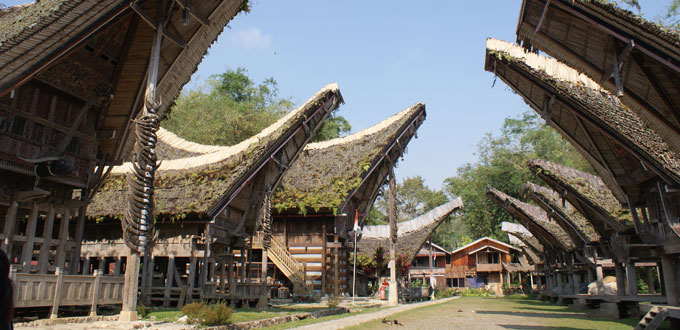
Day 1: Makassar – Toraja Arrive at Hasanuddin airport in Makassar, then depart to Toraja (328 km – approximately 7 hours) journey takes you across the Bugis villages with their typical houses on poles, and along the magnificent mountain pass. Lunch will be served in Parepare, a small port 156 km north of Makassar. Late afternoon, early evening arrive in Rantepao.
Day 2: Toraja Culture Tours After breakfast, a full day tour visiting the cliff tombs at Lemo, the family compound with typical Toraja houses at Siguntu, the Burial caves at Londa, etc.
Day 3: Toraja Culture Tours After breakfast, a full day Toraja villages tour visiting and seeing the typical Toraja villages of Ke’te’ Kesu’, Palawa’, To’barana’, Sa’dan and other villages.
Day 4: Toraja – Makassar? After early breakfast, lieve for Makassar and directly transfer you to the airport.
For more info: [email protected]
FOLLOW US ON:
Visit the fascinatin, manado 05 days / 04, rate this article:, related articles.
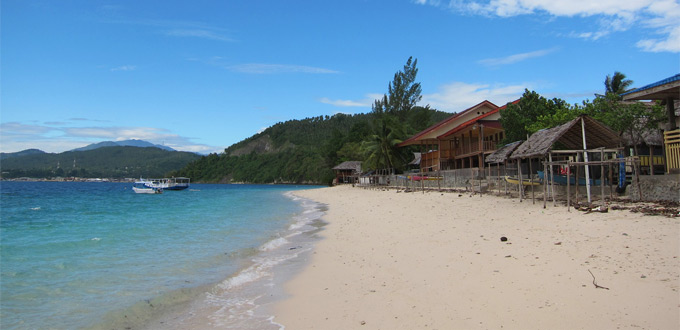
Tanjung Karang Divin
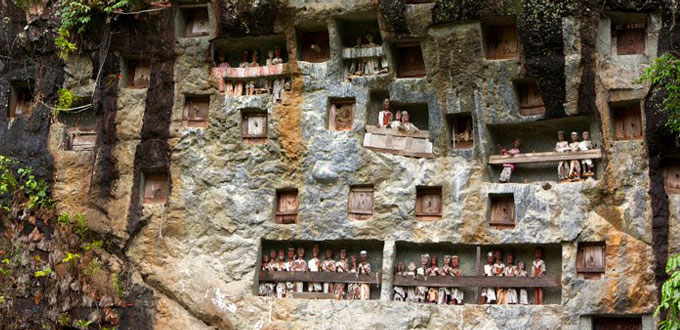
Toraja Experience To
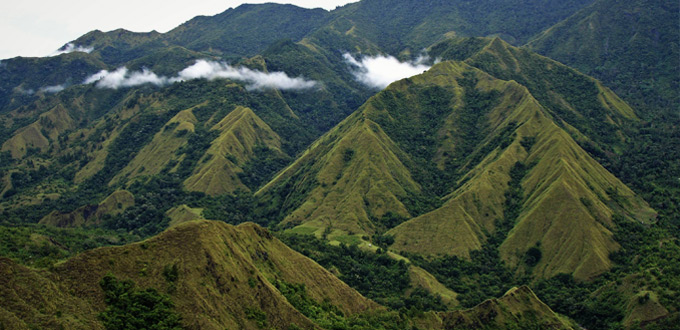
Makassar – Tan
- Accommodations

3 Things You Need to Know About Indonesia Spice Up The World!

38 Destinations to Explore for Your Next Holiday Bucket List in Indonesia!

Destination Highlight
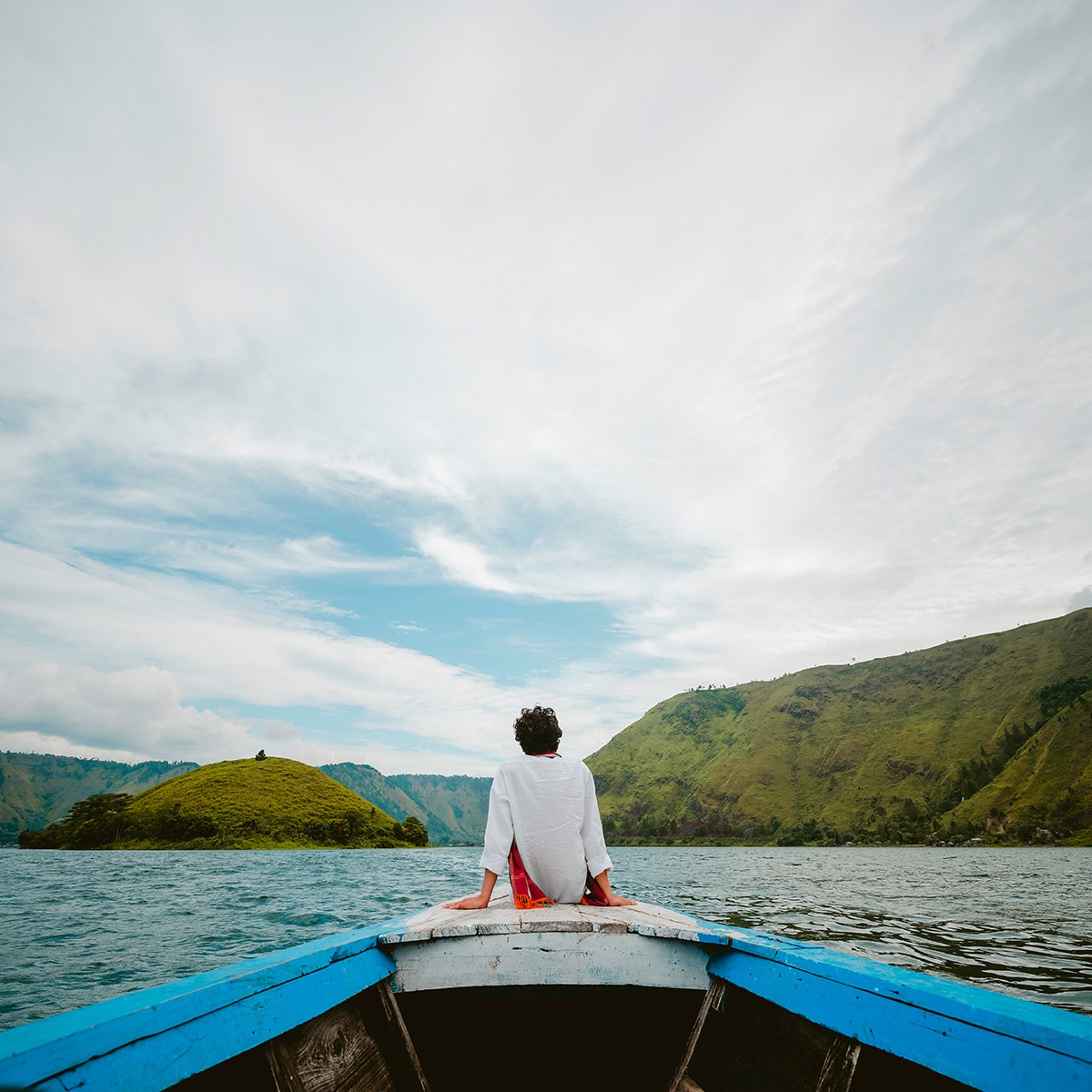
Labuan Bajo
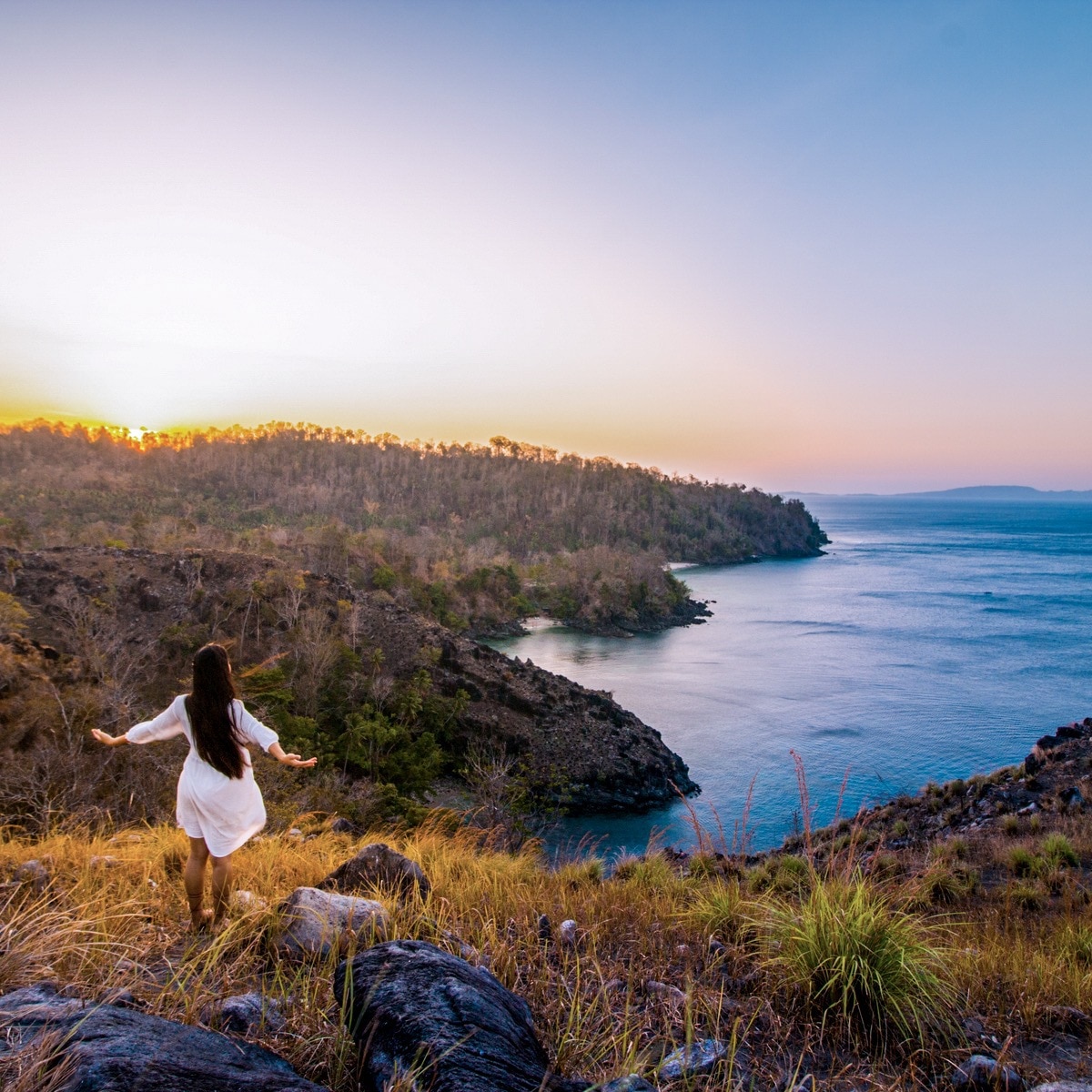
Tanjung Kelayang
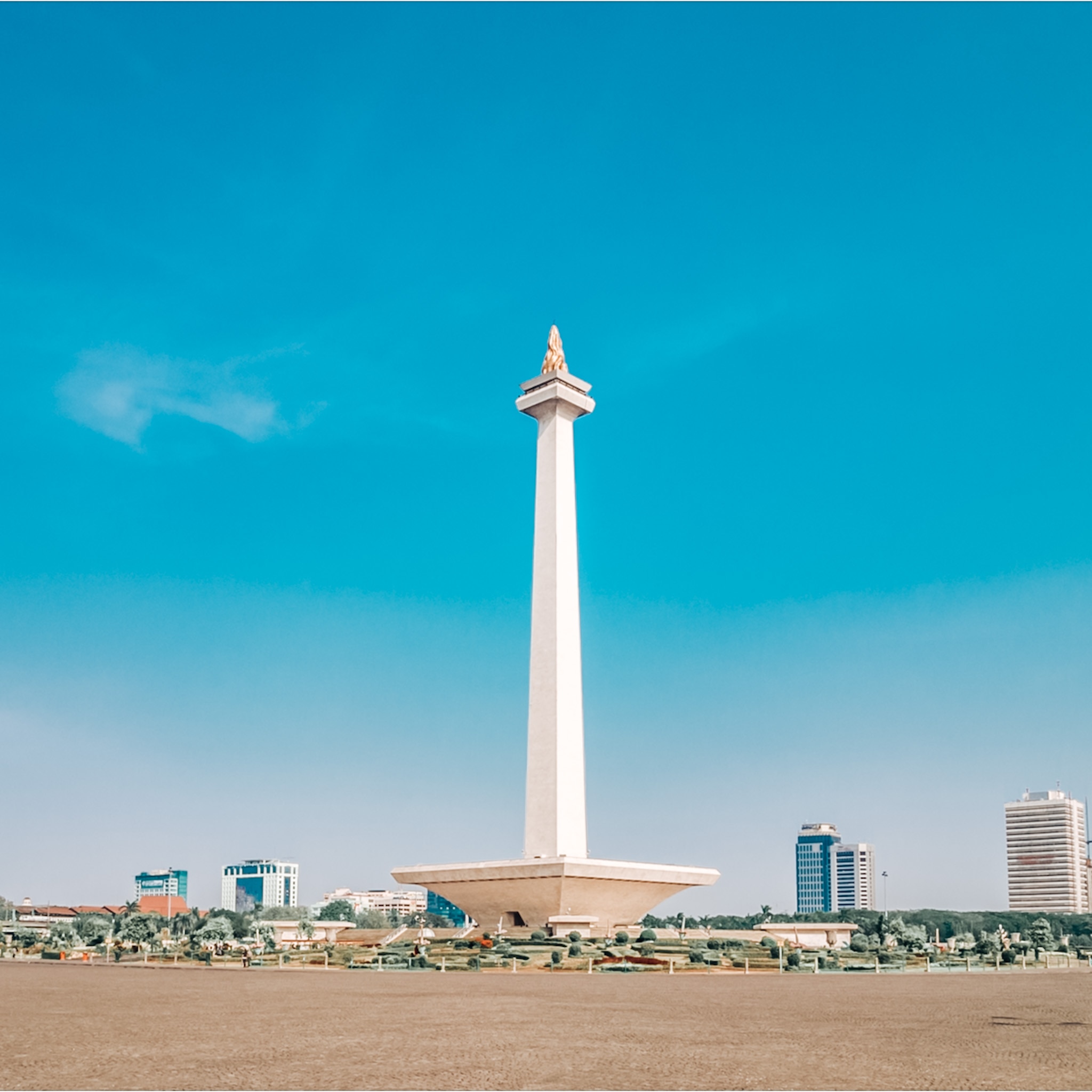
Subscribe and Get Free Travel E-Book
Thank you for subscribing to our travel guide newsletter. we know you will enjoy it, travel inspiration.

Wonderful.Indonesia
See the Destination
Travel Guide
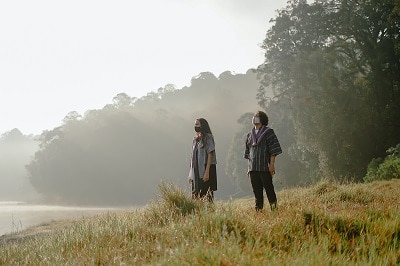
InDOnesia CARE
The Ministry of Tourism and Creative Economy introduced InDOnesia CARE, a symbol of support for Indonesia’s strong effort in implementing the cleanliness, health, safety, and environment protocols across the tourism industry as mandatory precautions. All to assure travelers that InDOnesia CARE for your safety, health, hygiene and comfort.

Make sure to learn about all the immigration requirements that should be fulfilled before visiting Indonesia, including e-passport and e-visa.
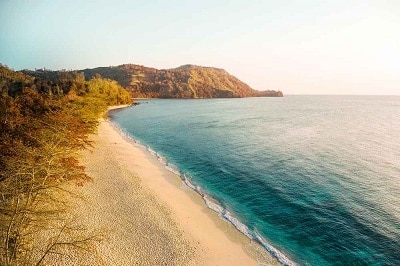
General Information
Find everything you need to know about how to get here, what regulations that should be noted, and many other things vital in arranging your travel plan to Indonesia.

Visit our other website
This is the official website of the Ministry of Tourism, Republic of Indonesia. The contents listed on this website are intended for informational purposes rather than commercial. Any displayed sale is meant as a token of partnership and will always redirect you to our partners' sites.

IMAGES
COMMENTS
Indonesia's tourism board touts Toraja as the next cultural destination after Bali, and their optimism is well-founded: beyond the cultural sites mentioned above, Toraja offers a few other adventures and activities well-suited to the hilly terrain:
This is a travel guide for Tana Toraja, Indonesia, a remote area in Sulawesi that has one of the most bizarre & unique cultures in the world.
Discover Tana Toraja's stunning landscapes and rich culture. Embrace age-old beliefs and rituals in this captivating part of Sulawesi, Indonesia.
Tana Toraja. Home to some Sulawesi's most stunning landscapes and one of Indonesia's most compelling traditional cultures, it's no wonder Tana Toraja is high on many bucket lists. The visual allure is immediate, with villages clustered around elaborately carved and painted houses with boat-shaped roofs, and towering terraces of emerald green ...
14 Amazing Things To Do In Tana Toraja It was the Indonesian Tourism Board who took me away from the islands around Bali and showed me more of what Indonesia has to offer. I felt like I was exploring a different country as the Trip of Wonders made me explore parts of North Sumatra, Central Java and a region in Central Sulawesi: Tana Toraja.
The highlands of Tana Toraja offer an exciting mix of culture and nature. From hiking to white water rafting on the Sa'dan River and delicious coffee there are lots of things to do in Tana Toraja. While we've already covered the best hotels in Tana Toraja for Every Budget (best luxury is The Misiliana Hotel, for mid-range we recommend Luta Resort and budget Hotel Indra) we thought we'd ...
Things to Do in Tana Toraja, Indonesia: See Tripadvisor's 259 traveler reviews and photos of Tana Toraja tourist attractions. Find what to do today, this weekend, or in August. We have reviews of the best places to see in Tana Toraja. Visit top-rated & must-see attractions.
One of the most famous types of coffee grown in Indonesia is from the highlands of Toraja. Located 1,500 meters above sea level, Toraja is an ideal place to cultivate coffee producing some of the best beans in Indonesia.
Read our guide on how to spend 48 hours in Tana Toraja the mystical land with bizarre and captivating traditions.
Tana Toraja (also referred to as Toraja) is a region in South Sulawesi, Indonesia. It is a landlocked regency and it is famous for the Torajan homes (Tongkonan) and traditional funeral ceremonies.
I. Introduction A. Brief overview of the Toraja people (Suku Toraja) The Toraja people, commonly referred to as Suku Toraja, are one of the ethnic groups of Indonesia, hailing predominantly from the mountainous region of South Sulawesi. Rich in indigenous heritage in Indonesia, the Toraja stand out due to their unique cultural practices and beliefs. Their ancestral practices and tales are an ...
Tana Toraja Regency is the home of interesting tourist spots. Travelers can get around and visit several vacation destinations such as Londa, Lemo, and Tampang Allo.
Toraja People. Toraja people are the indigenous people who live in highland of South Sulawesi, Indonesia. The word Toraja comes from the Bugis language's to riaja, meaning "people of the uplands". Before the 20th Cntury, the Torajan was live in autonomous villages, where they practiced animism believe and was being untouched by outside world.
Toraja culture is a unique and fascinating culture found in the mountainous region of South Sulawesi, Indonesia. The Toraja people are known for their rich cultural heritage, which revolves around animism, indigenous beliefs, and elaborate funeral rituals.
Tana Toraja or Torajaland or Land of the Toraja or Tator, is a regency in South Sulawesi, Indonesia. The home of Toraja ethnic group people. The local government seat is in Makale, where the center of Toraja culture is in Rantepao. But now, Tana Toraja has been divided in two regencies that consist of Tana Toraja with capital is Makale and ...
Tongkonan, a wonder of architecture from the dawn of Toraja civilization, is far from a simple abode. One of the most famous types of coffee grown in Indonesia is from the highlands of Toraja. Located 1,500 meters above sea level, Toraja is an ideal place to cultivate coffee producing some of the best beans in Indonesia.
Since then, Tana Toraja was officially opened to the outside world, formerly in 1970, and became an icon of tourism in Indonesia. Although most of The Torajan hold Christian or Moslem, most of the elder are still believe in traditional believe named Aluk, which mean "The Way".
Top 10 Best Things to Do in Sulawesi. 1. Visit Tana Toraja Funeral Village. I enjoy cultural travel destinations, and visiting Toraja for a funeral ceremony takes the cake of all the experiences I've had in Indonesia. Toraja is also known as Indonesia's "Funeral Village", or less-charmingly, "Death Village".
Toraja (Suku Toraja) Brief overview of the Toraja people (Suku Toraja) The Toraja people, commonly referred to as Suku Toraja, are one of the ethnic groups of Indonesia, Skip to the content Travel Guide Indonesia
Weeks with ideal weather are listed above. If you're looking for the very warmest time to visit Toraja, the hottest months are June, August, and then July. See average monthly temperatures below. The warmest time of year is generally early June where highs are regularly around 91.6°F (33.1°C) with temperatures rarely dropping below 72.6°F ...
Today, tourism and remittances from migrant Torajans have made for major changes in the Toraja highland, giving the Toraja a celebrity status within Indonesia and enhancing Toraja ethnic group pride. [ 9]
The Toraja people of southern Sulawesi, one of Indonesia's largest islands, are known for their elaborate death rituals, which include preserving and exhuming the dead.
Day 3: Toraja Culture Tours After breakfast, a full day Toraja villages tour visiting and seeing the typical Toraja villages of Ke'te' Kesu', Palawa', To'barana', Sa'dan and other villages. Day 4: Toraja - Makassar? After early breakfast, lieve for Makassar and directly transfer you to the airport.
The Ministry of Tourism and Creative Economy introduced InDOnesia CARE, a symbol of support for Indonesia's strong effort in implementing the cleanliness, health, safety, and environment protocols across the tourism industry as mandatory precautions. All to assure travelers that InDOnesia CARE for your safety, health, hygiene and comfort.